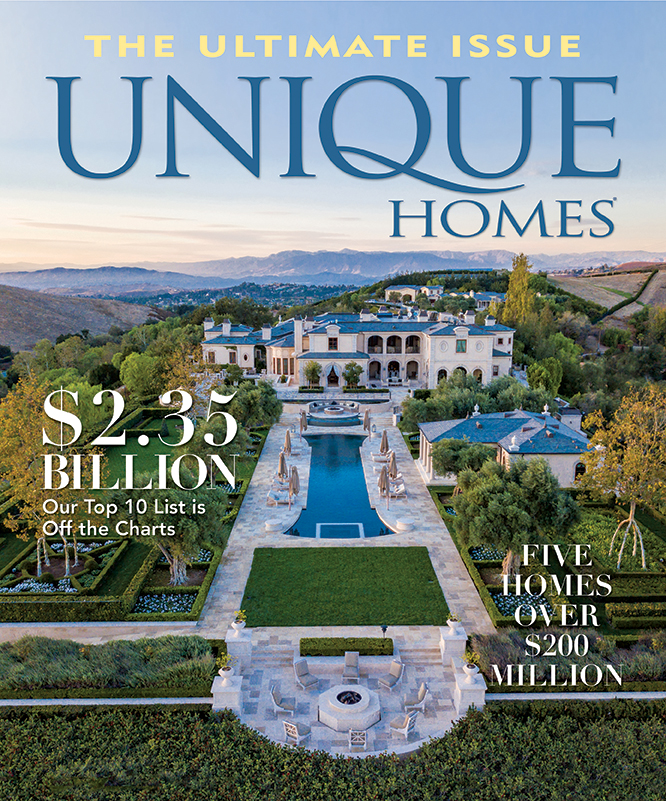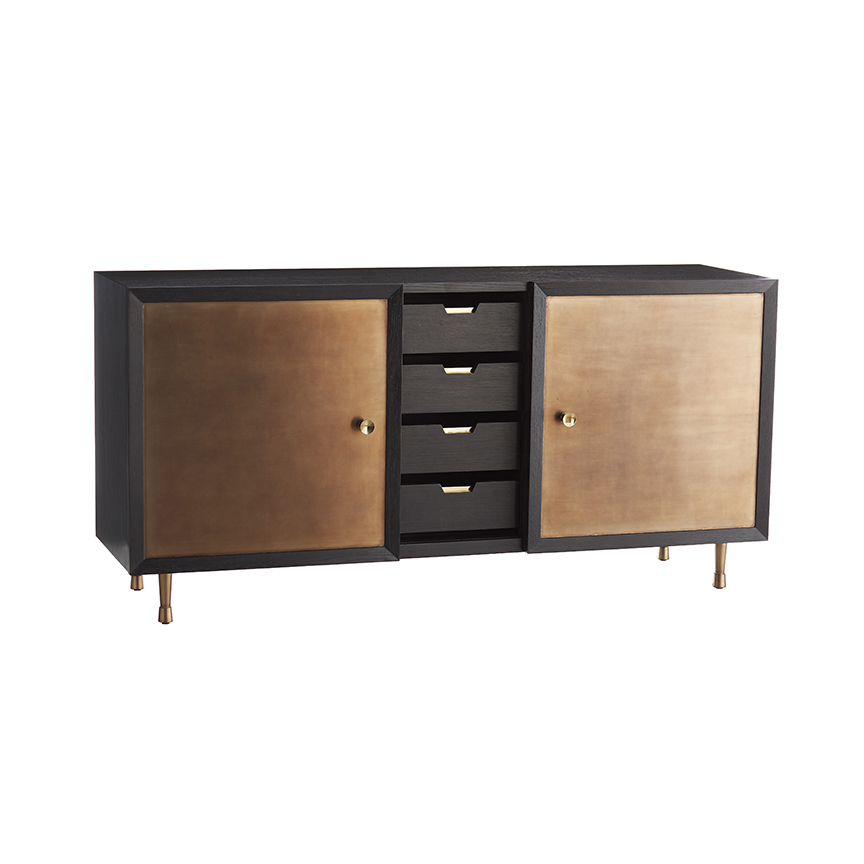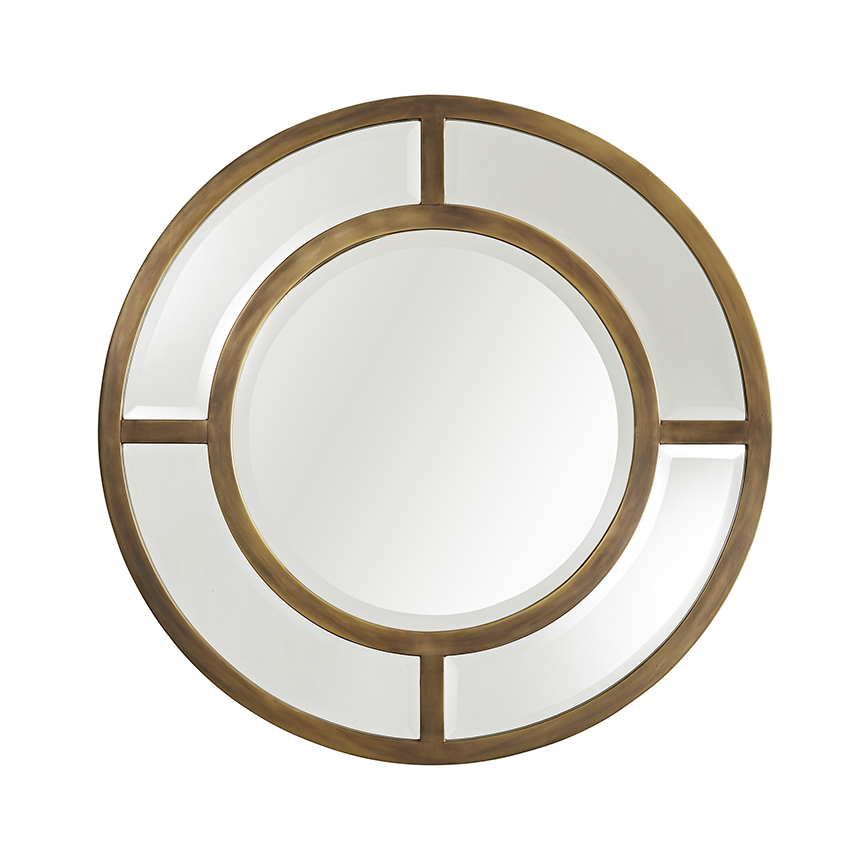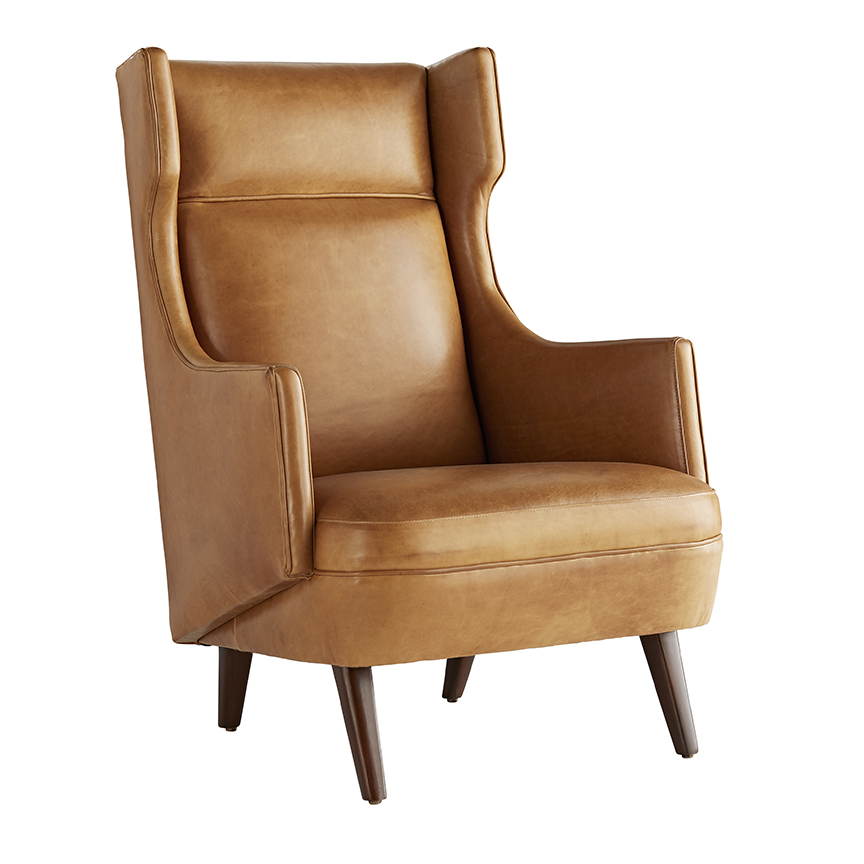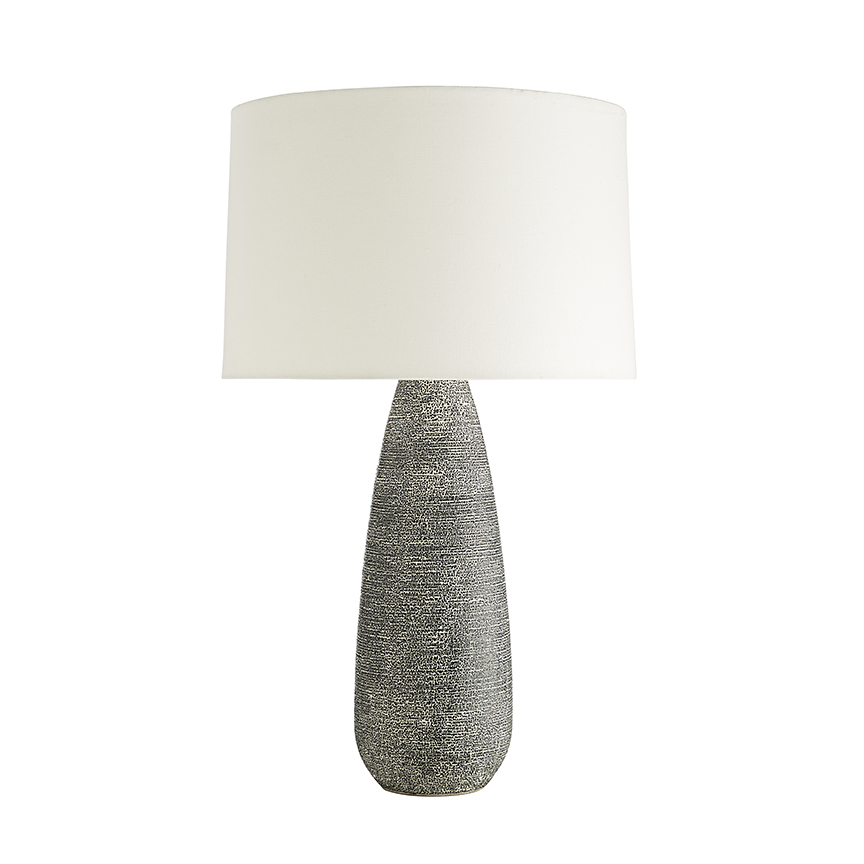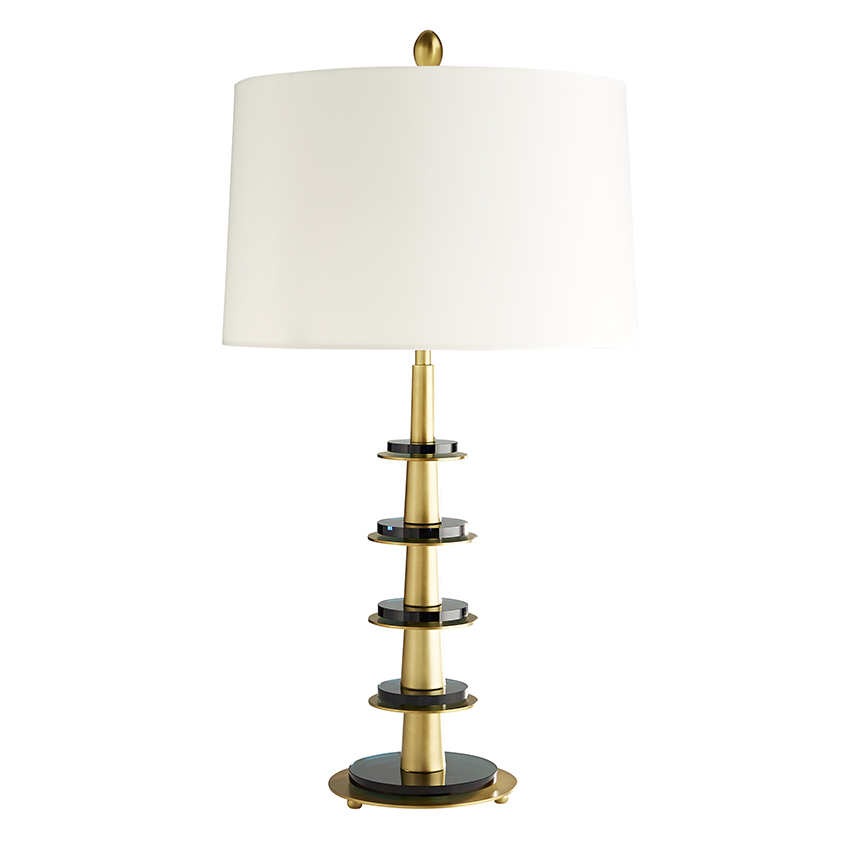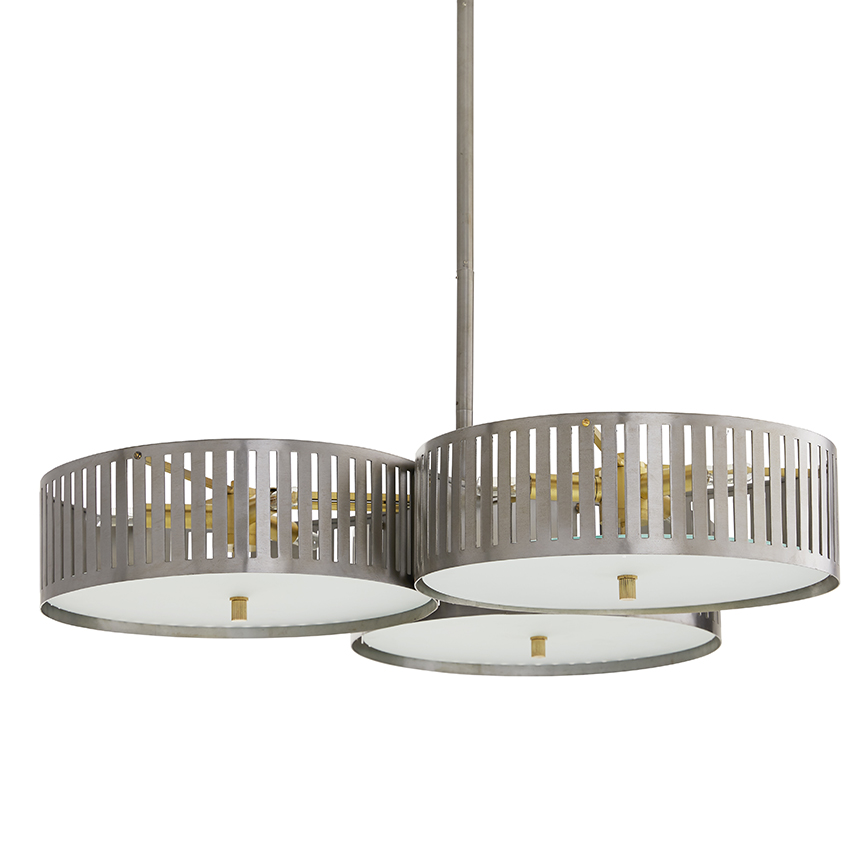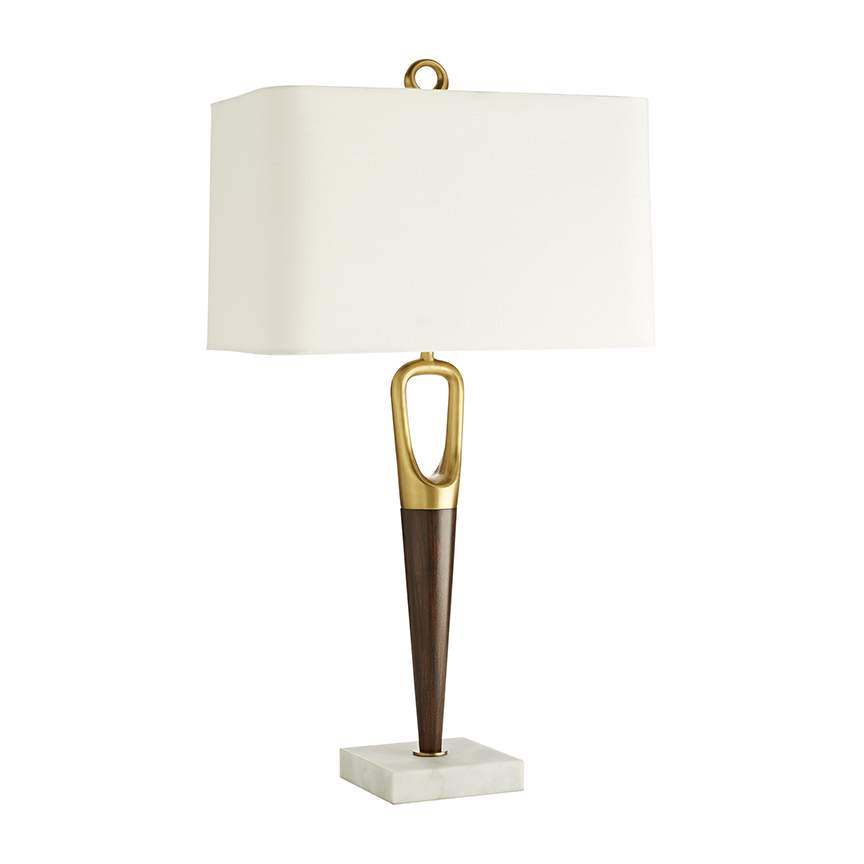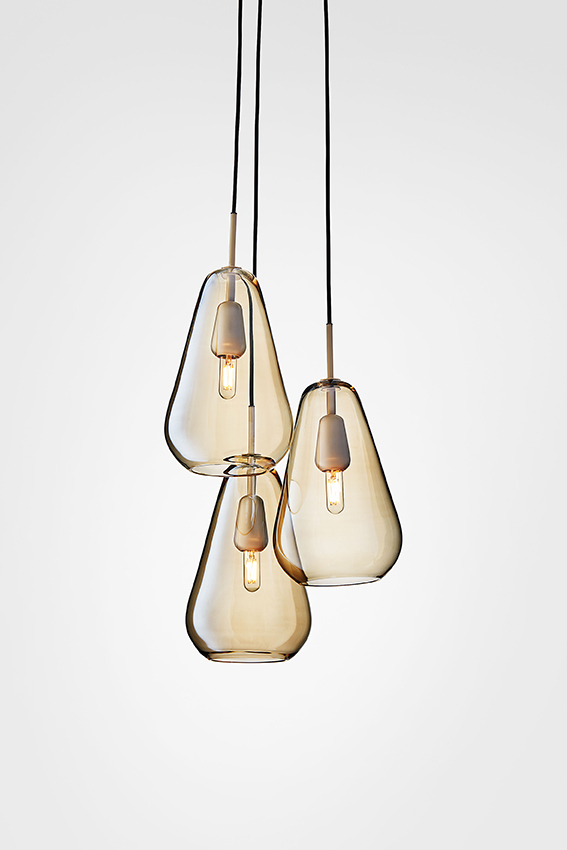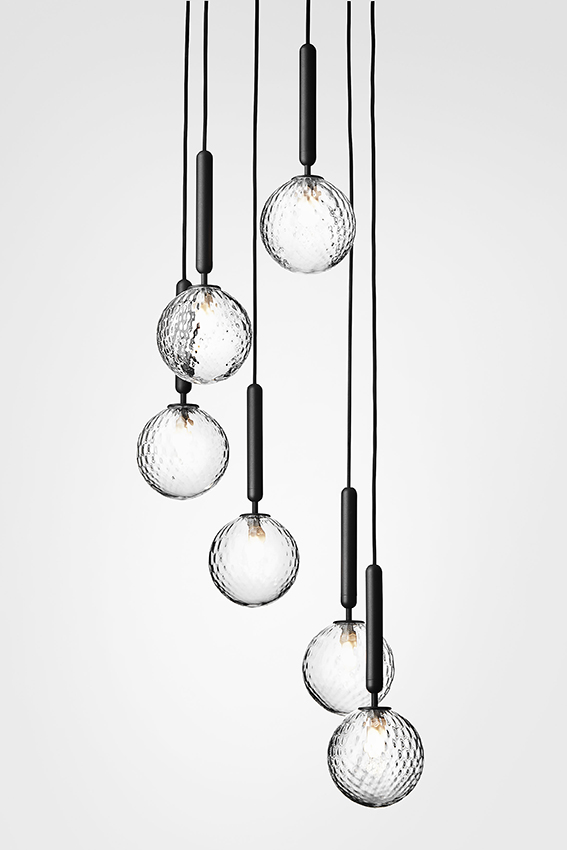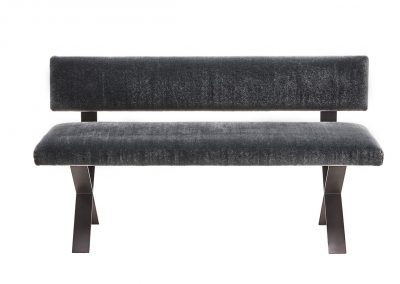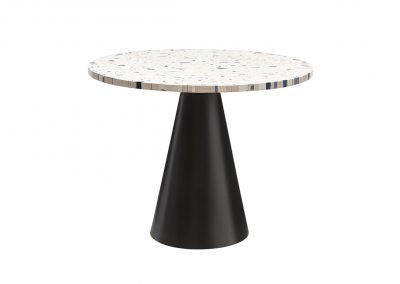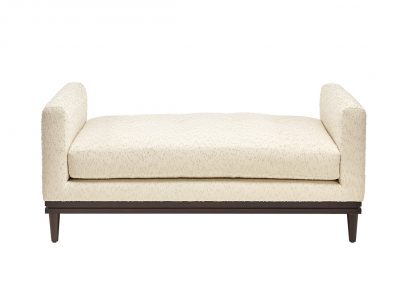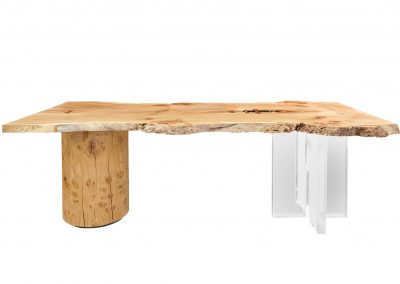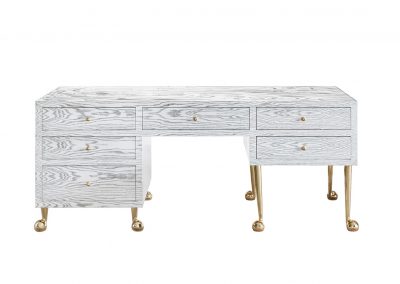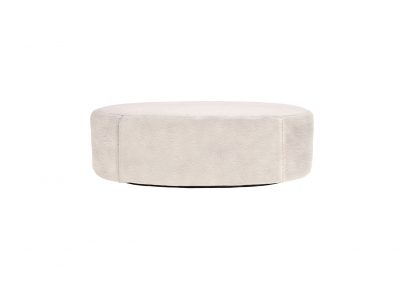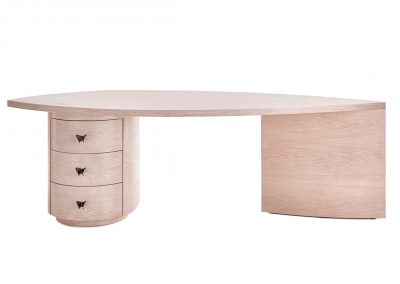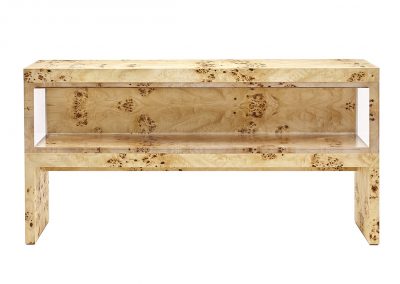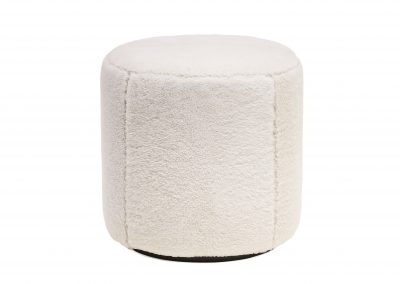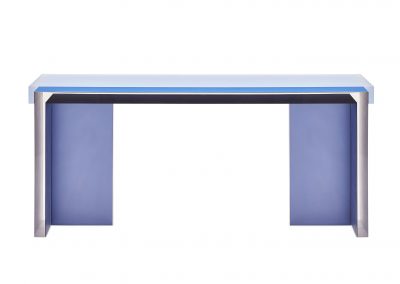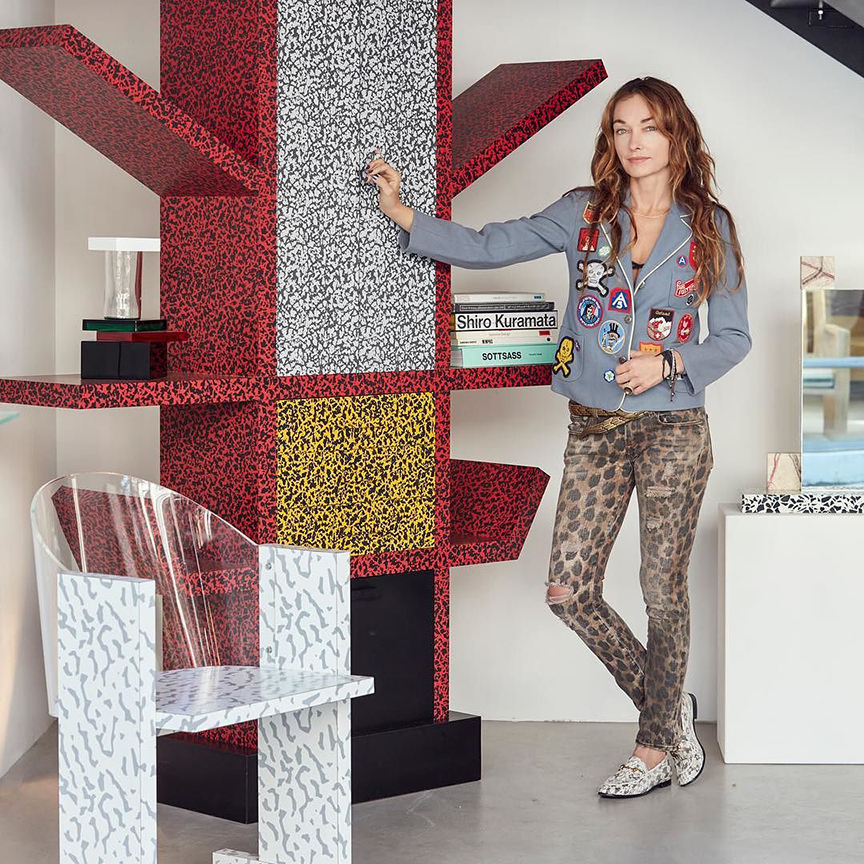
Over a decade in the furniture business led me to a simple conclusion: The furniture industry needed to be reinvented. It was dominated by legacy players who were doing the same things for generations, while the hospitality industry was changing dramatically. Hotels and other public spaces were turning into immersive experiences where design and style statements mattered more than ever. But when it came to furniture, the big players were unable to deliver the quality, speed, and responsiveness that this new world demanded within hospitality players’ budgets.
So, I created White Space to fill this void.
At the heart of our model is a new infrastructure that delivers a custom-built supply chain for every project. We work with — and manage — the factory best suited for the task, no matter where in the world it’s located. This is the big change the industry needed — the ability to manufacture the highest quality furniture, casework, lighting fixtures and flooring with scale, efficiency, and attention to detail.
To put it another way, my inspiration for starting White Space was identifying that there was a white space in my industry — a gap that we could successfully fill.
What is the big change you’re bringing to office spaces?
We’re eliminating the false choice that existed in the market: that you have to choose between quality and affordability, or creativity and efficiency. Buyers and purchasers of all kinds were resigned to picking out generic furniture from a catalogue, because that’s the way it had always been. Now no one has to make that choice.

It really started with the epiphany described above, and the realization that I had the experience to start a company like this. I knew the strengths and weaknesses of so many factories around the world — and I had cultivated the professional connections and knew the projects I brought them would get the focus and effort they deserved.
Those connections also mean that we can bring our own quality-control teams on site: they’re there at every stage of the production process to make sure we’re delivering exactly on our clients’ specs. Because of our ability to deliver the highest quality on time, within budget and at scale, we’ve been able to mature very quickly and work with some of the biggest names in the hospitality industry — from Disney to the Ritz-Carlton.
What are some of your favorite projects?
One of my favorite projects is the work we did for the Nakoma Lodge. I feel particularly proud of this — not only because it came out so well, but because it is an honor to be associated with a Frank Lloyd Wright design. That we were able to successfully and seamlessly extend his aesthetic speaks to the power of the system we’ve built, to fully realize even the most complicated and nuanced of visions.
Also, I feel very proud of the work we did with WeWork to open their Tel Aviv flagship. They are clearly changing the workplace and it’s a thrill to be part of that change. They also have high standards and a sophisticated vision for their brand, that’s always extended to the spaces they design, so it was extremely gratifying that they chose us. It’s also always fun to work on such a cool, trend-setting project.
How is White Space innovating office spaces today?
We’re helping to kill the cubicle — and more broadly, the fluorescent-lit, colorless, isolated environments that employees were almost universally forced to work in a few years ago. A lot of modern corporate offices are taking cues from the hospitality industry, surprisingly enough: the shared spaces that encourage socialization and collaboration are increasingly a focal point in corporate office design, as we come to realize that happy, healthy employees who actually like each other end up more productive. People do more when work when it doesn’t feel like work — and creating that vibe and work ethic starts with the physical environment. It’s the main reason people come to us to make their offices feel less like offices.
What are your future aspirations for White Space?
I aspire to continue to expand globally, both within the hospitality industry and within adjacent industries, including co-working spaces. We want to continue to work with creative brands who have expansive visions, and with designers that share these qualities. We’re here to support anyone who has an envelope they want to push.
The system we’ve created is agnostic to the project, and we want to work with people who’ve been boxed in by their previous vendors, that couldn’t deliver as fast and as fully as we can. We help those companies compete through innovative design. Design is a true competitive advantage today.
Photos courtesy of White Space
Meant to add that perfect finishing touch, accent pieces carry an important weight when it comes to completing a room’s design, from the size of a mirror or its frame to the brightness of matching lamps. High-end brand Frontgate understands the impact these items have on a space and offers an assortment of essential furnishings that bring that space together.
Mirrors
Finding the perfect accent mirror means finding the balance between functionality and beauty. If function is the priority, Frontgate offers pieces that keep this balance in mind. From the tropical Marigot Shell Mirror or the Temple Chinoiserie Wall Mirror, both optimal for spaces like bath vanities or entryways, beauty no longer has to be sacrificed.
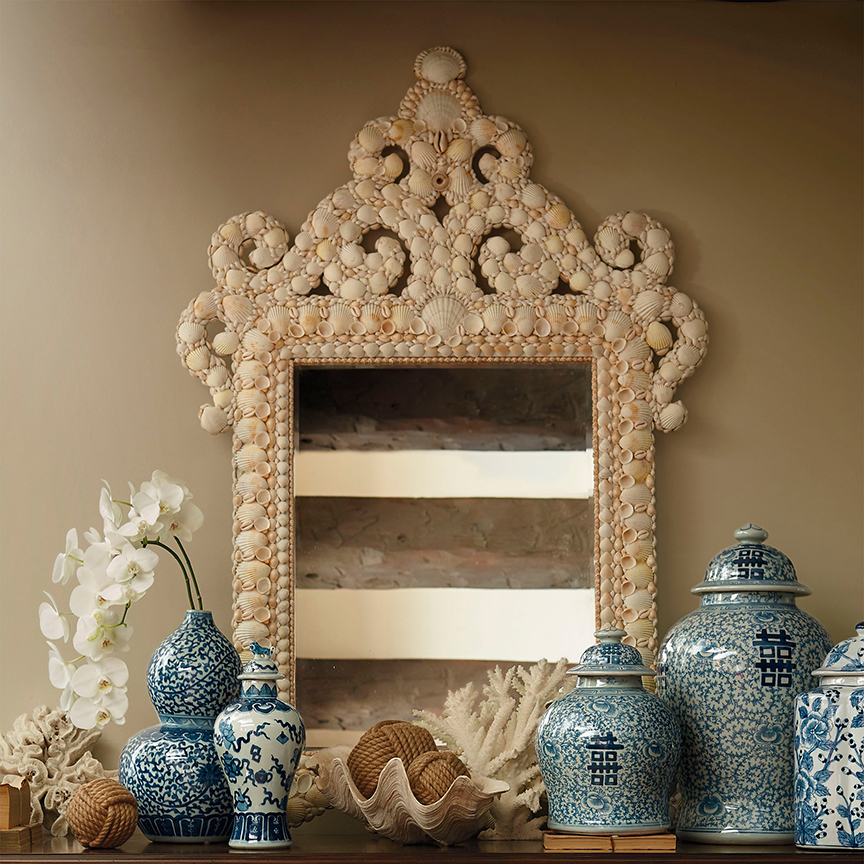
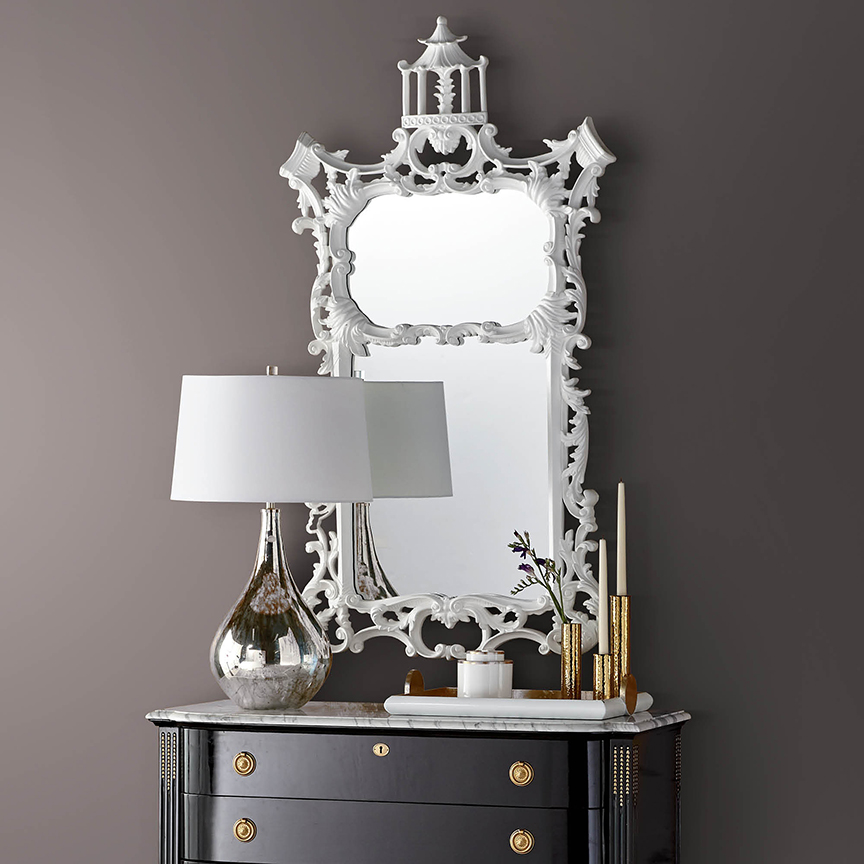
For Frontgate it’s all about making a statement, according to a brand representative, while also working with the space given. A perfect example is the Duchamps floor mirror. From the dressing room to the living room, this large floor-to-ceiling mirror with additional storage opens up a space with its reflective surface and creates a visual impact. For even more creative displays, art-inspired pieces like the Intermix Beveled Mirror also open a room and add a bit more interest to a simple space.
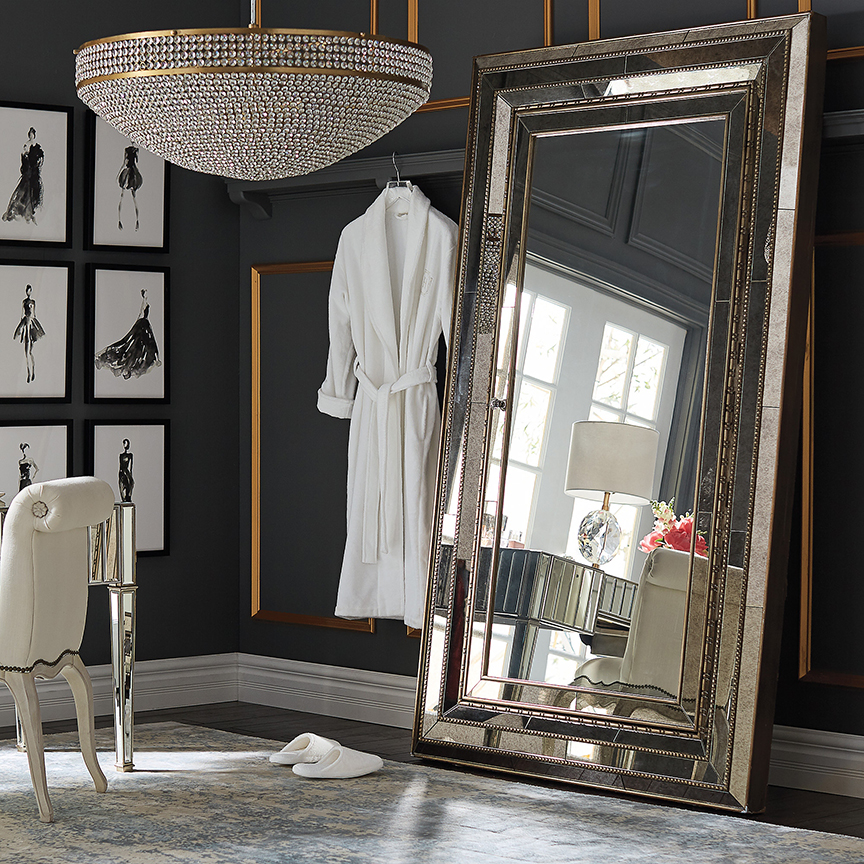
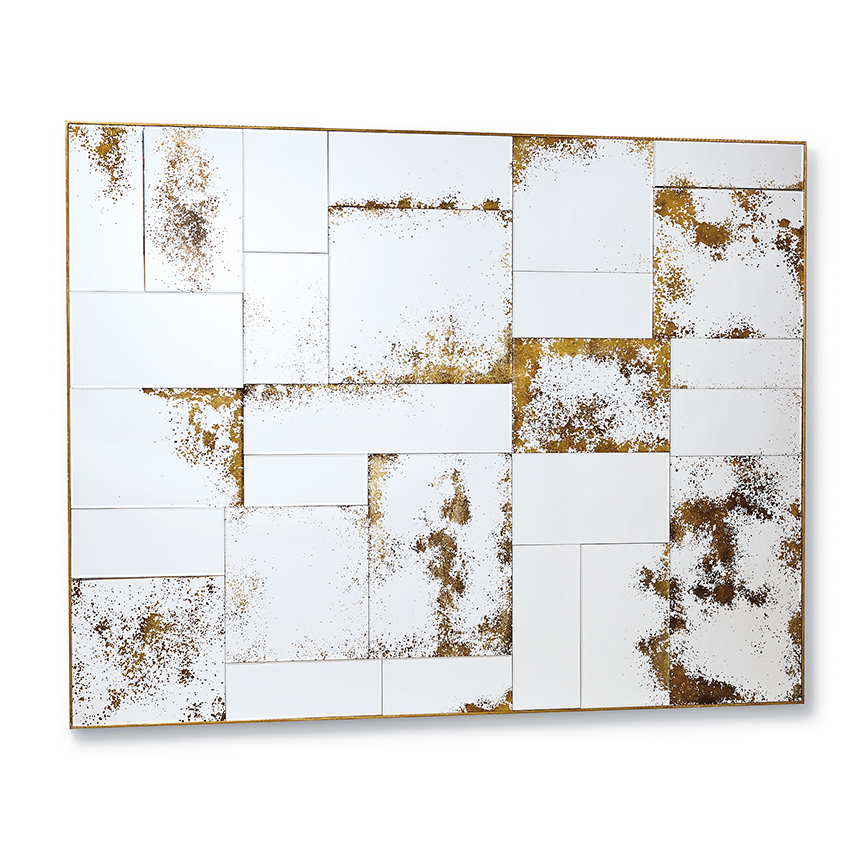
Geometric Pendant Lighting
Symmetry is key when it comes to lighting, particularly with pendant lighting options that usually come in twos. Geometric pendants are popular for a number of reasons. The variety of finishes and materials used to create them fit easily into almost any space. From the simple and elegant Maxwell and Tillary lights with metallic gold and brass finishes to the glamorous Aurora pendant, these fixtures have the ability to create a dramatic focal point in rooms that are purposeful on their own.

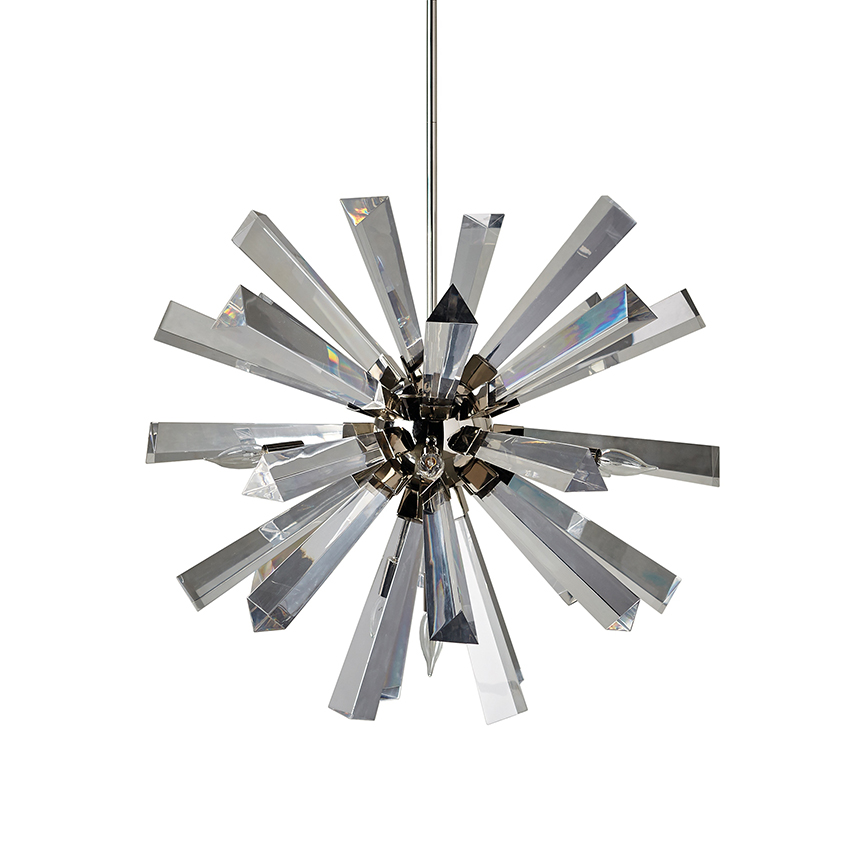
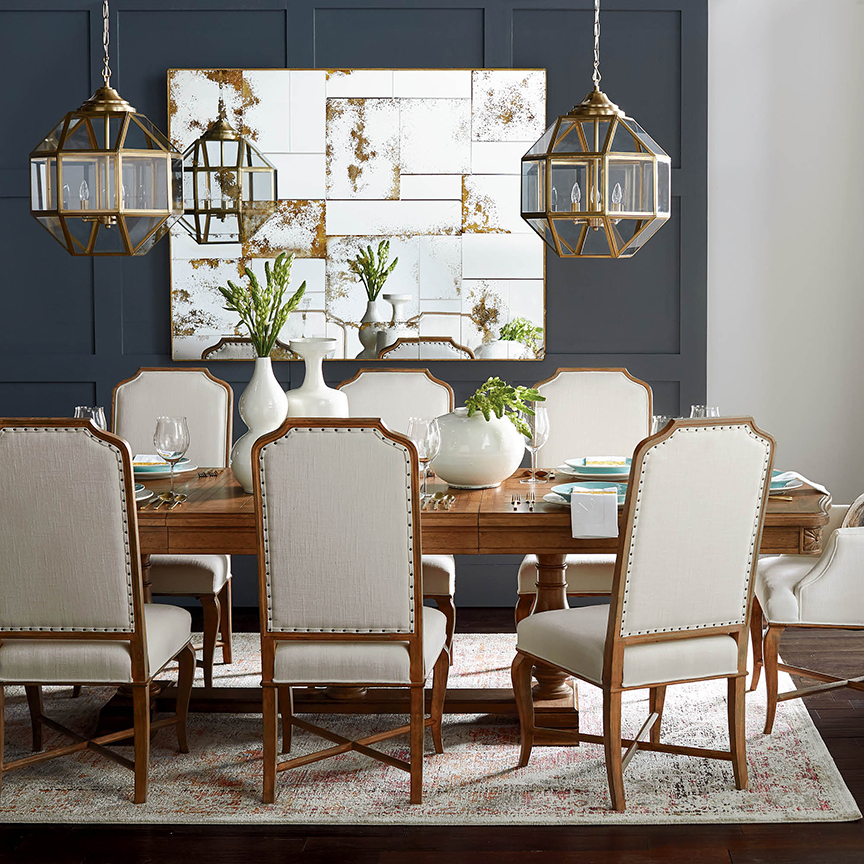
Velvet Pillows
An ever-widening trend in fashion and home design has been the inclusion of velvet in more ways than one. Particularly with pillows, Frontgate representatives says that “whether made of cotton or silk, crushed or devoré, running your hand along a length of velvet is a sumptuous experience.”
The transformative powers of the fabric are never-ending; a cold house becomes a warm home when a velvet throw is draped over curves, catching the light and bringing a dimensional texture to a piece of furniture or to a room. And while velvet is known for playing well with other fabrics in fashion, it also pairs perfectly with faux fur, brass, glass, marble and more. Scattering some velvet pillows on a neutral-colored couch adds a visual, tactile warmth, perfect for the fall, transforming a simple space to a sophisticated room.
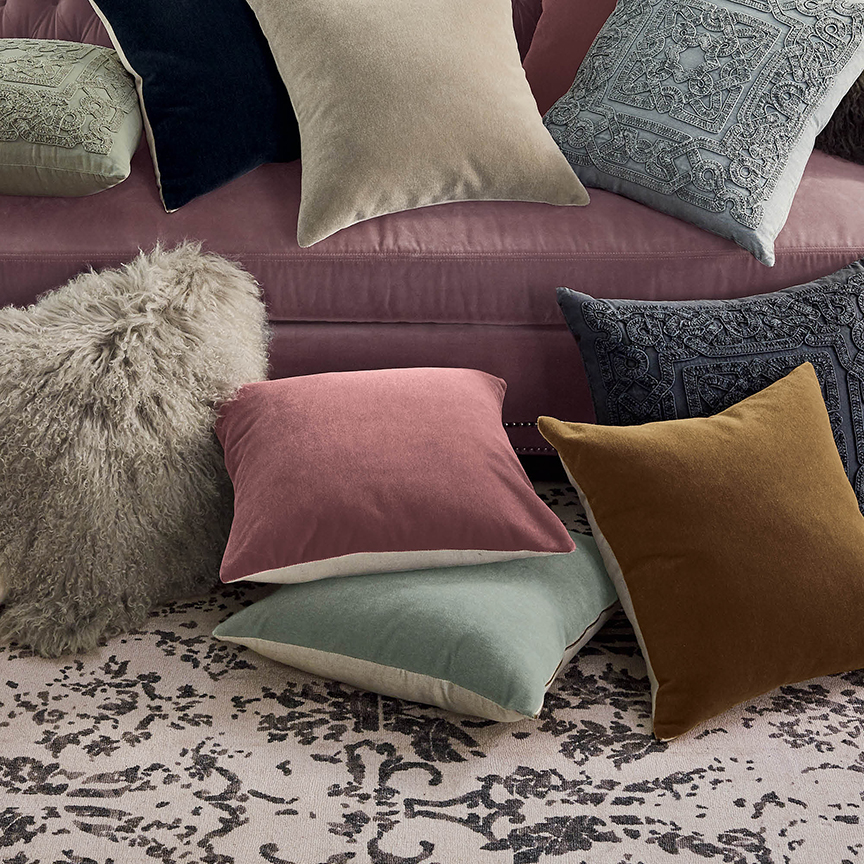
All photos courtesy Frontgate.
Ditch overused gold and silver trends for charming copper hues that will add to your home’s modern, yet cozy atmosphere.
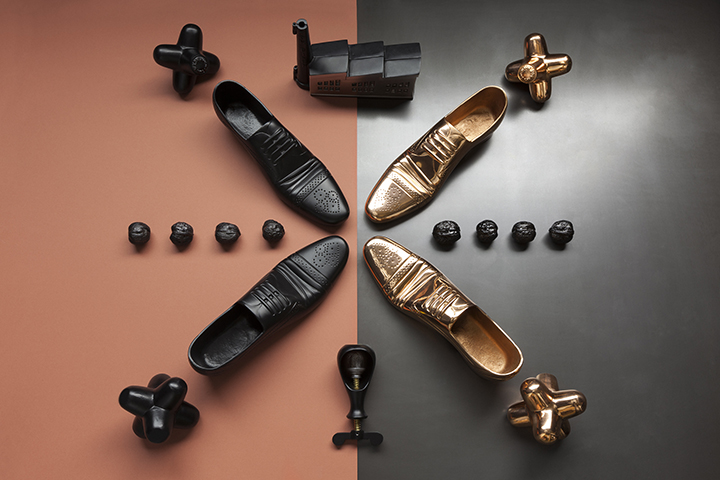
Copper’s versatility is why you should incorporate it into your decor this year. The range of shades, from pale soft tones to rich and deep copper allows for designers to work with a material and color that is complex. Silver and gold are classic, but copper is an exciting touch of diversity amongst tradition.
Copper Can Be Functional
The Hex Copper Bowl with a textured look and feel creates an eye-catching item that is unique and functional. The less-than-perfect surface of the bowl is what makes this piece interesting. The dents and bends in the metal create more than one shade of copper, which makes it more interesting than one smooth item.

Product: Hex Bowl Medium Copper
Copper as a Conversation Starter
The Tom Dixon Cast Shoe Copper is the perfect example of a playful way to bring copper into your decor. A conversation starter such as this would stand out perfectly against a navy blue wall or door. The item is cast iron, copper colored, and designed to be a door stop. This small accent piece could also help tie together other copper aspects in a room, including other shades of copper.
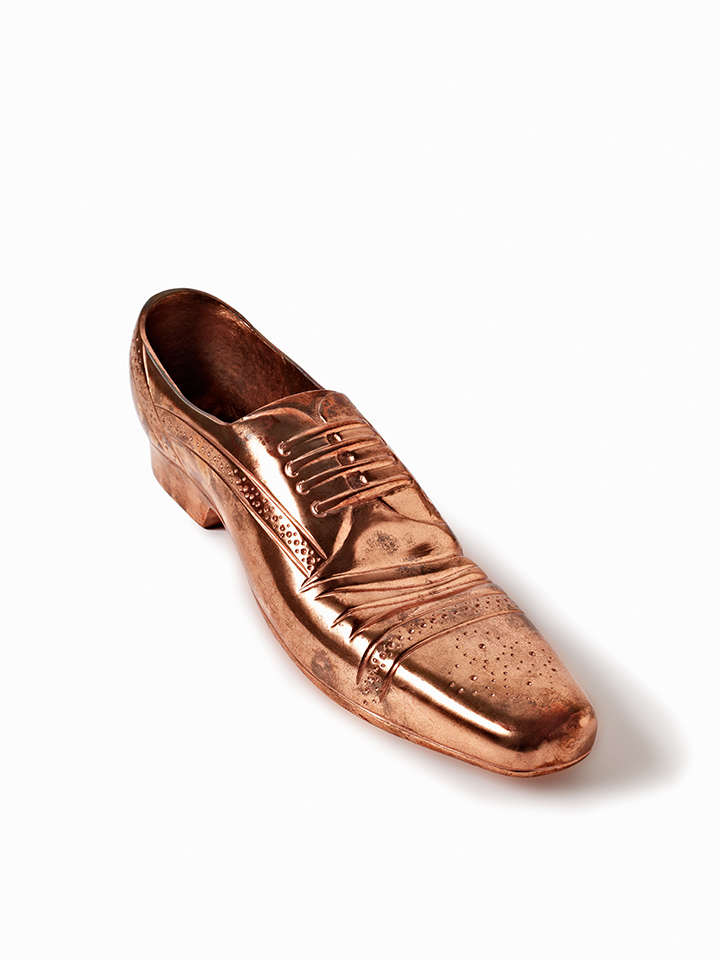
Product: Cast Shoe Copper
Ultra Sleek
The Copper Round Pendant is a perfect contrast to a rough copper bowl. The ultra sleek exterior of the pendant proves that copper is not restricted to a rustic feel. Reflective and chic, the pendant is also a conversation piece that will undoubtedly bring a modern feel to any room. Smooth and rough pieces can work together in the same space. Pairing these items is a creative way to reveal copper’s multiple layers.
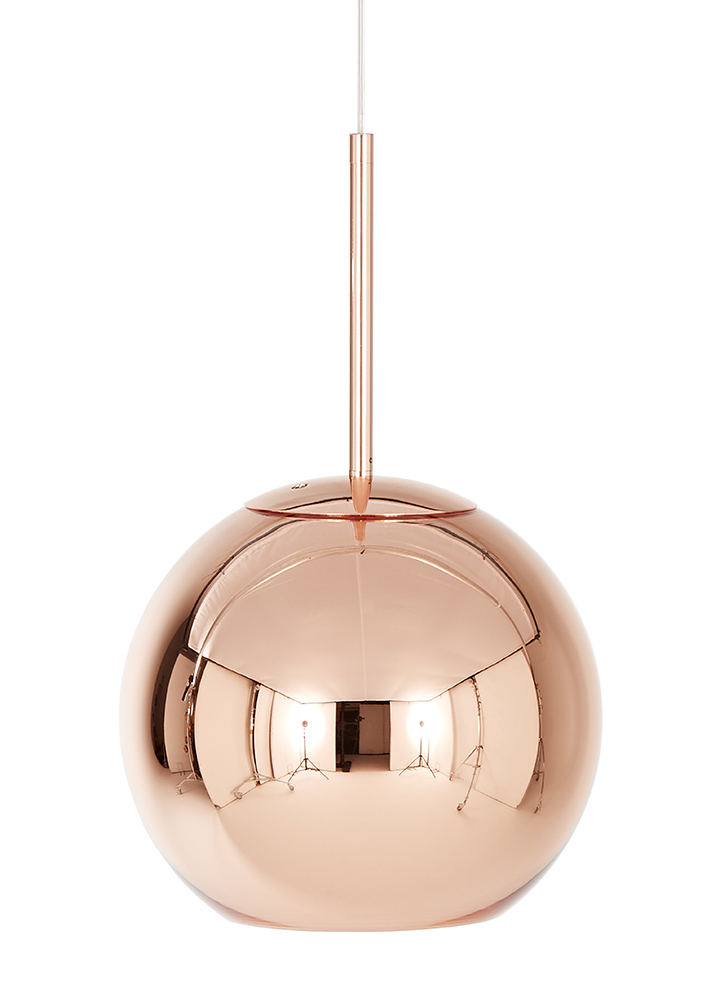
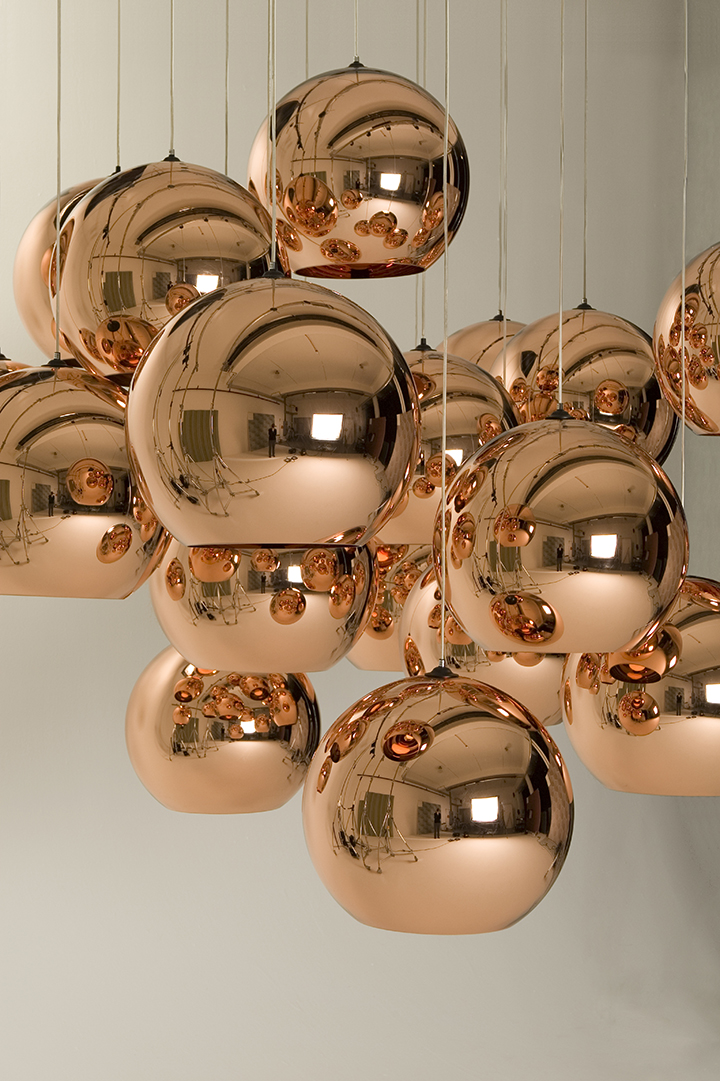
Eclectic Addition
If you are interested in using new materials or fresh colors in a room, you don’t have to commit right away. Small items, such as these Eclectic Candle London Large are easily removed or changed if you’re undecided. Candles can also accent and play off of larger copper tones that you may integrate later. Small details are what makes a room feel complete and thoughtfully put together.
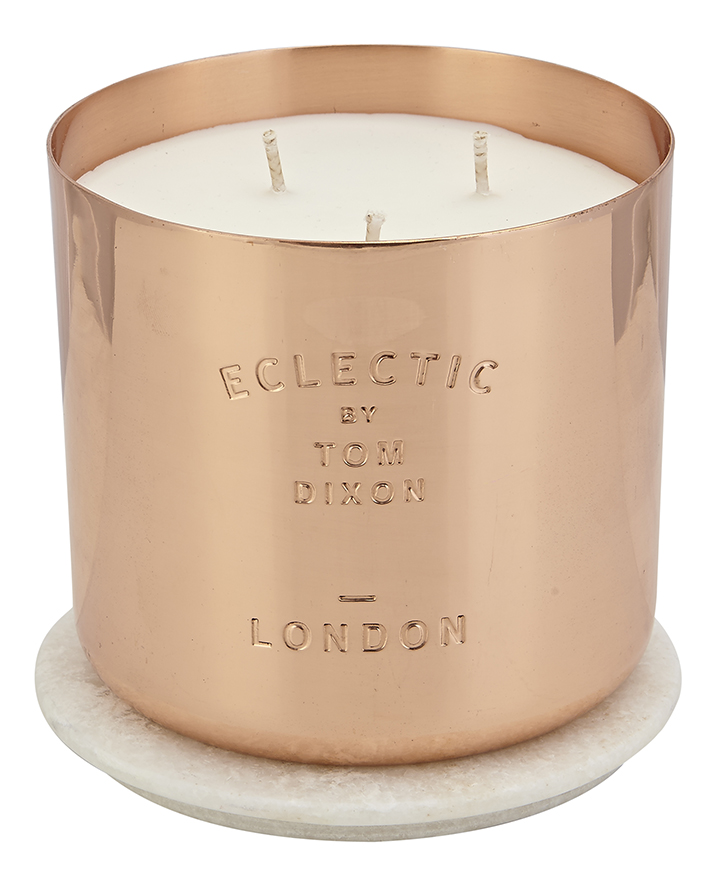
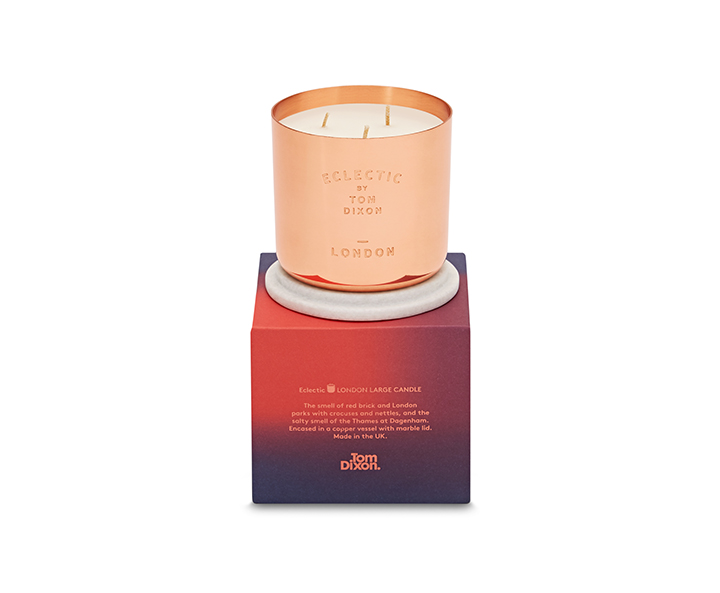
Product: Eclectic Candle London Large
Photos courtesy of Tom Dixon. Where to buy: tomdixon.net
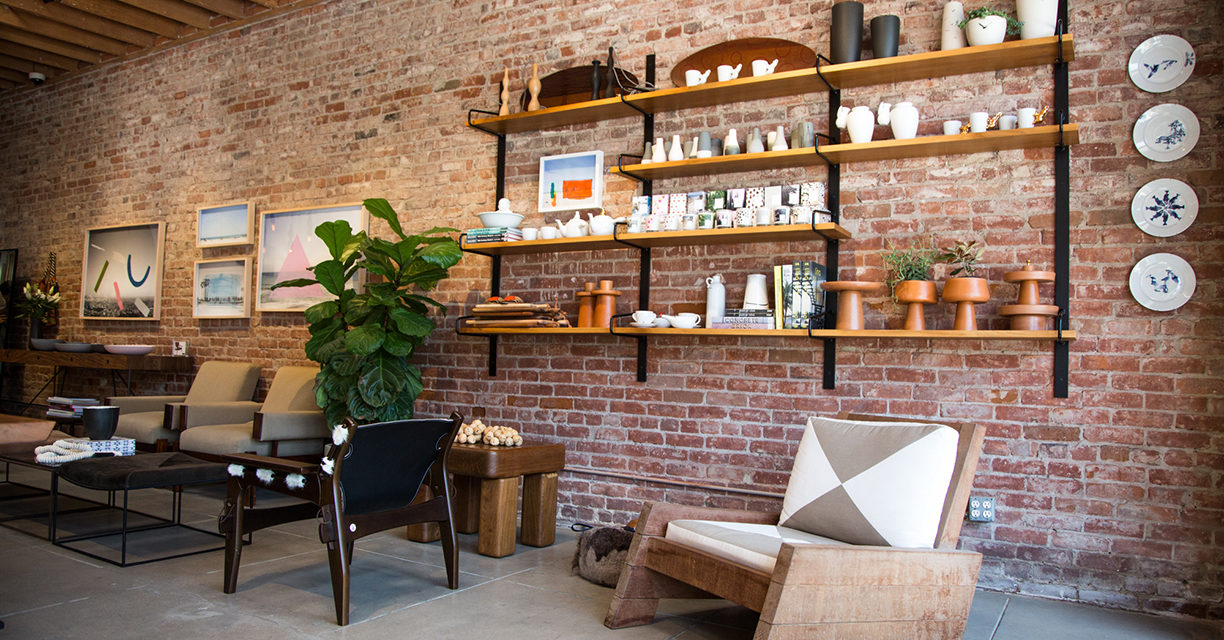
Demand for Mid-Century Modern furniture continues to be strong, but while Scandinavia steals the spotlight, savvy collectors are heading south — to Brazil.
By Roger Grody
With its sexy, timeless aesthetic, Mid-Century Modern design, whether architecture or home furnishings, has been hot for decades. Pieces from Europe and the U.S. dominate the market, but some incredible work from Brazilian designers has gone relatively unnoticed. The world is discovering that Oscar Niemeyer, Brazil’s most famous modernist, had plenty of company.
“I believe the mix of cultures that make Brazil — we are, after all, a country built by immigrants — give us a particular charm, a natural flair,” says Carlos Junqueira, founder and president of Espasso. A preeminent source for Mid-Century Modern Brazilian art, furniture and accessories, the New York-based gallery has branches in Miami and London. “With globalization, Brazilian designers have begun developing a strong design identity,” says Junqueira, explaining that the appeal of the genre transcends borders and cultures.
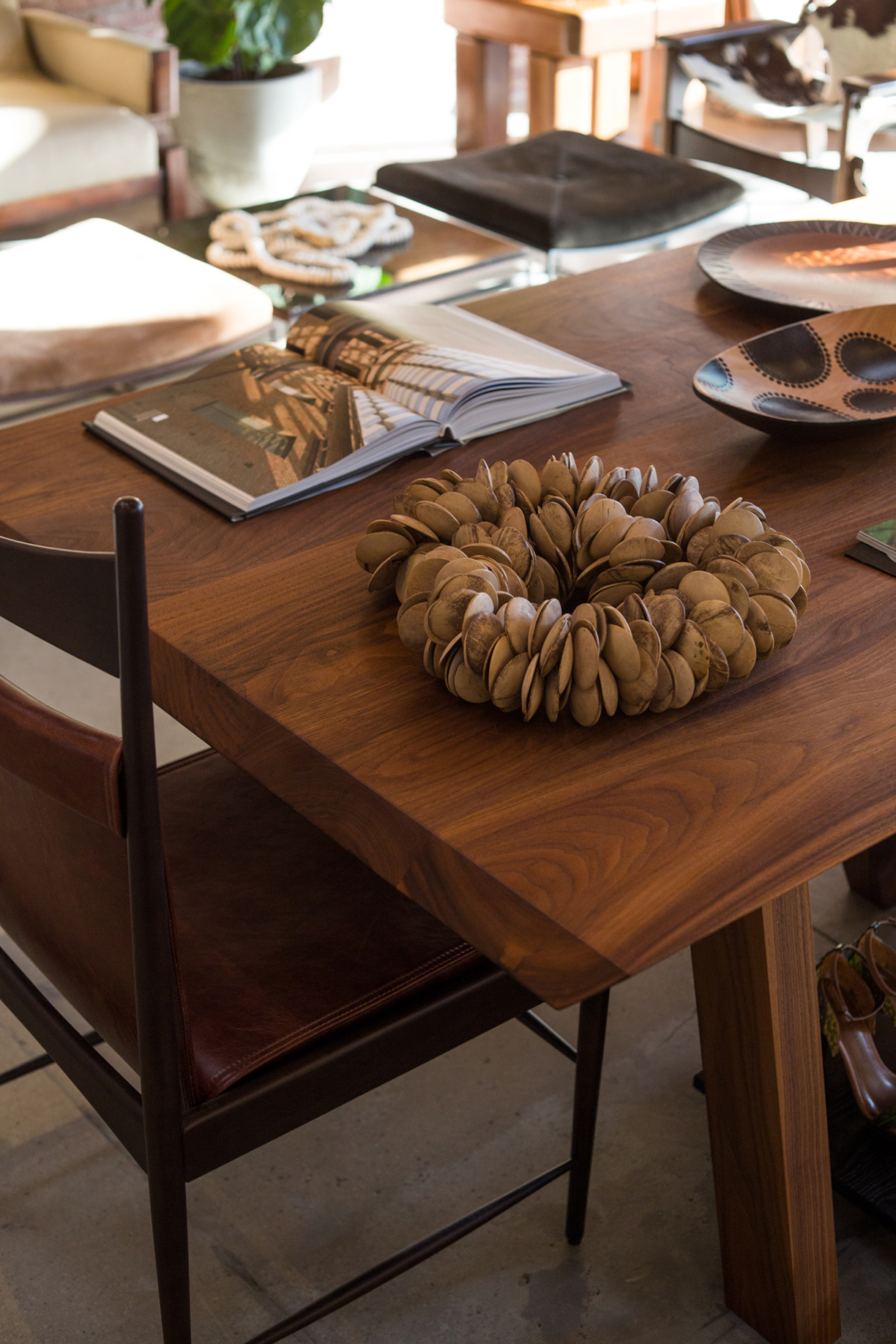

The Dinamarquesa armchair was designed by Polish-born Jorge Zalszupin, one of the Brazilians that comprised a robust creative community in the South American nation after World War II. When Niemeyer was designing Brazil’s new national capital of Brasilia, he recruited Zalszupin to create furniture for the futuristic governmental complex.
Featuring leather cushions supported by a sleek, delicate frame of imbuia (a Brazilian wood resembling walnut), the 1959 chair reflects the Mid-Century Modern aesthetic that was sweeping the globe and, in fact, Dinamarquesa means “Danish” in Portuguese. When viewing these timeless pieces of Brazilian furniture, it is easy to forget that some of them were designed more than 60 years ago.
The Asturias rocking chair is personally handcrafted from sustainable materials by São Paulo designer Carlos Motta. It is a study in simplicity but a dramatic and formidable piece of furniture, with bold red-and-olive cushions embedded in a solid, planked frame. Through its use of reclaimed itauba-preta wood and minimal machine cuts to reduce its environmental impact, this indoor-outdoor chair has been lauded for both design and sustainability.
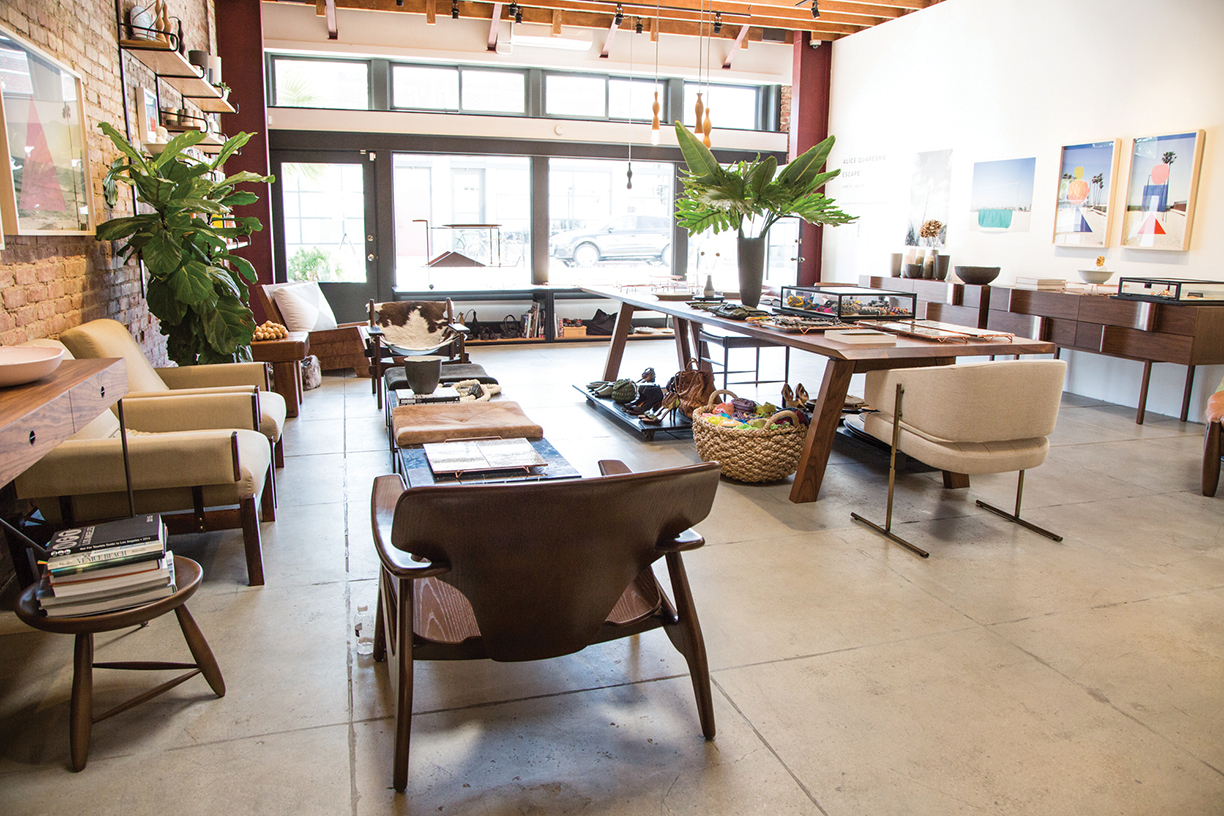
From contemporary São Paulo-based architect Arthur Casas is the Ondas sideboard, which features a unique rippled edge. Crafted from American walnut, this piece is a departure from the clean, angular features that characterized the structures Casas designed earlier in his career.
On a quiet stretch of Pacific Avenue in Los Angeles’ once-bohemian, now-trendy neighborhood of Venice is Le Magazyn, where founder Ana Kozak celebrates design of all kinds from her native Brazil. In addition to shoes, jewelry and art is a collection of Mid-Century furniture designed by some of her country’s great modernists.
Kozak, who moved with her family from São Paulo to L.A. seven years ago, has transformed a 1,000-square-foot storefront into a combination furniture showroom, fashion boutique and exhibition space. Pendant lamps from São Paulo’s Estudio Manus hang from exposed beams while merchandise is displayed on a walnut table designed by Brazilian modernist Claudia Moreira.
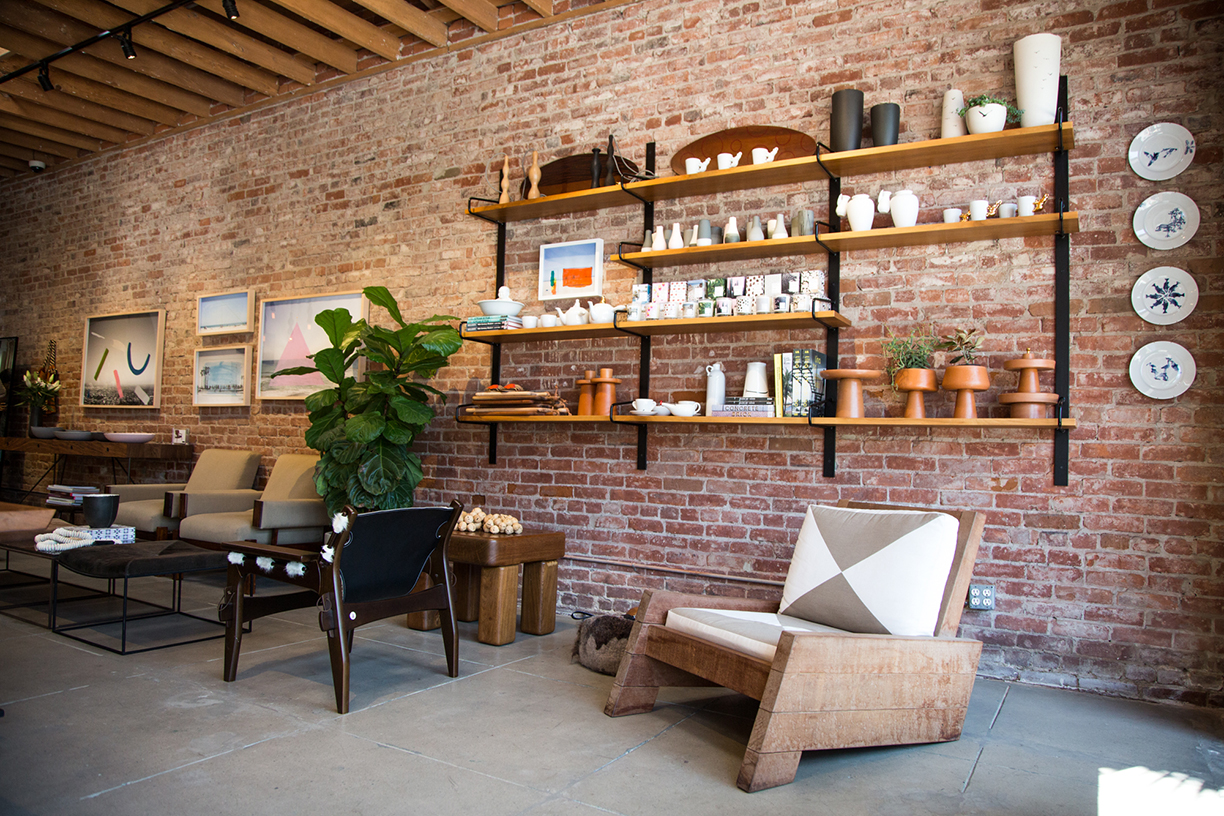
Because Le Magazyn is Espasso’s representative on the West Coast, Kozak is able to fill her intimate showroom with a selection of pieces that intrigue the professional designers, local homeowners and tourists who drop by her store. “For many years the reference point for this era of furniture was Denmark, but now people searching for something new and different are discovering Brazilian Mid-Century,” says Kozak.
Le Magazyn’s walls are lined with photos from the widely published Brazilian photographer Claudio Edinger, whose aerials of a smoggy São Paulo skyline are hauntingly alluring. The work of architect/photographer Leonardo Finotti, another Brazilian fascinated by urban aerial shots, is offered through Espasso.
Atlanta interior designer Perry Walter discovered Brazilian Mid-Century Modern furniture when he was searching for a compelling coffee table for a client. While that commission involved a modern townhouse, Walter believes these Brazilian pieces can also be effective in more traditional settings.
“I think each piece is unique and can be displayed like a work of art,” says the designer, who appreciates how the style’s minimalism is warmed through the use of exotic woods and organic forms.
“The value of Brazilian furniture has been growing considerably as its recognition and desirability increases,” reports Espasso’s Junqueira, who notes that as prices rise knockoffs naturally emerge. “I’m extra-careful and attentive to every single detail related to the work I represent and the vintage selection I offer,” says the gallery founder, pleased to see Brazilian design internationally relevant and appreciated.

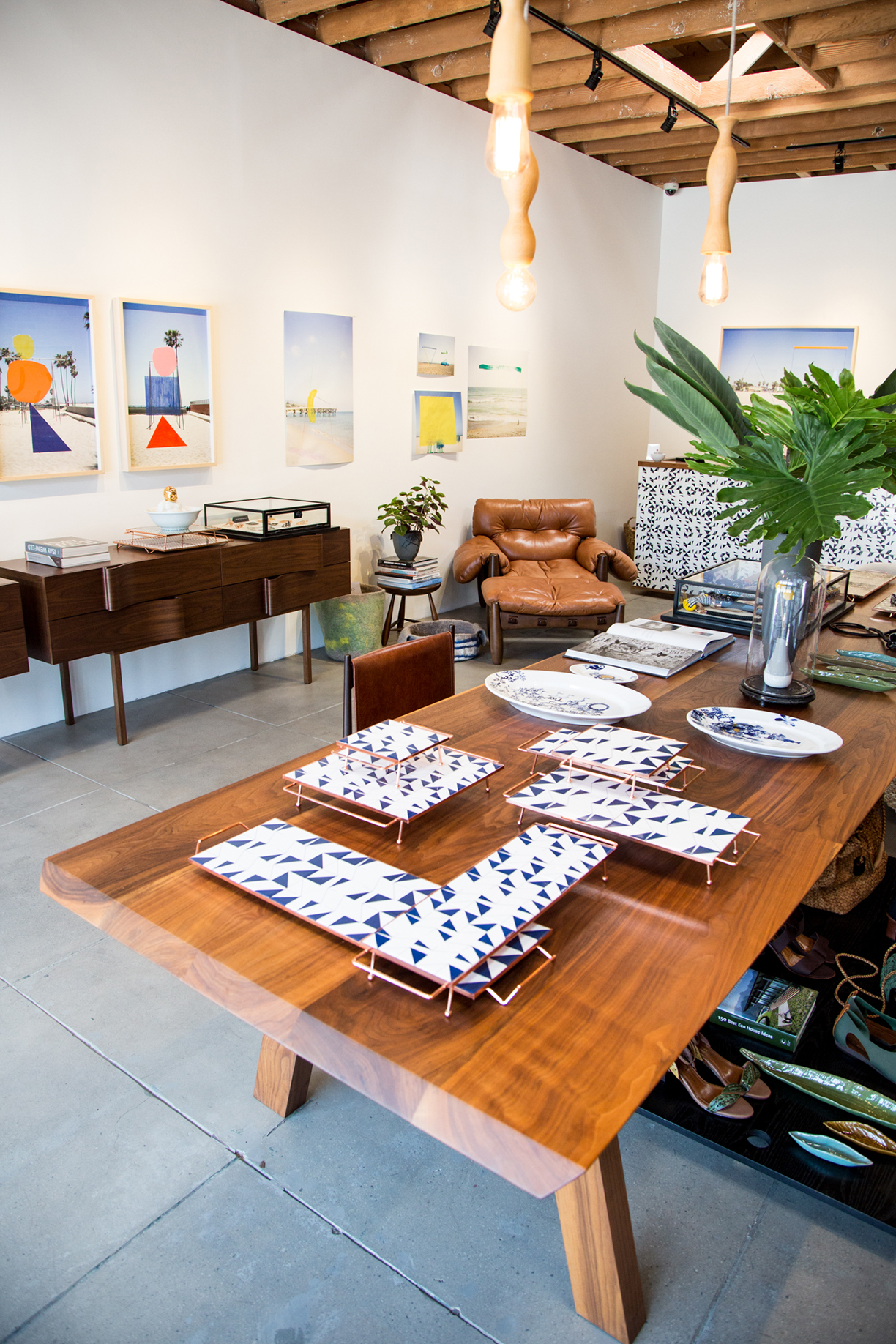
Photos courtesy of le magazyn
Minimalism is oftentimes a more classic, aesthetically pleasing sense of design that makes a statement in a simplistic way. Incorporating simple and timeless designs, Arteriors offers a selection of pieces, bringing a warm tone of sophistication to lighting, furniture and accessories in their most natural forms. Below are several pieces from their assorted collections that complete any minimalistic theme.
All photos courtesy Arteriors.
Recently released exclusively with SUITENY, the design brand Nuura is known for creating aesthetic and select lighting options that reflect the riches and joy found in Nordic nature. With the chandelier as a central focus, Nuura offers lighting collections that enrich the room and complete the interior in both private homes and public spaces. By combining delicate design with state-of-the-art technology, the designers strive to create unique quality lighting that has a positive impact on our wellbeing.
“The meaning of Nuura is light and honour,” says a brand representative. “From our base in Denmark, we are inspired by the Nordic light — an everlasting source of inspiration. We wish that our lighting collections will spread life and joy.”
All photos courtesy SUITENY.
The invisible collection began with two friends who saw a need for a website that offered some of the most exclusive items from the best names in French design in one marketplace.
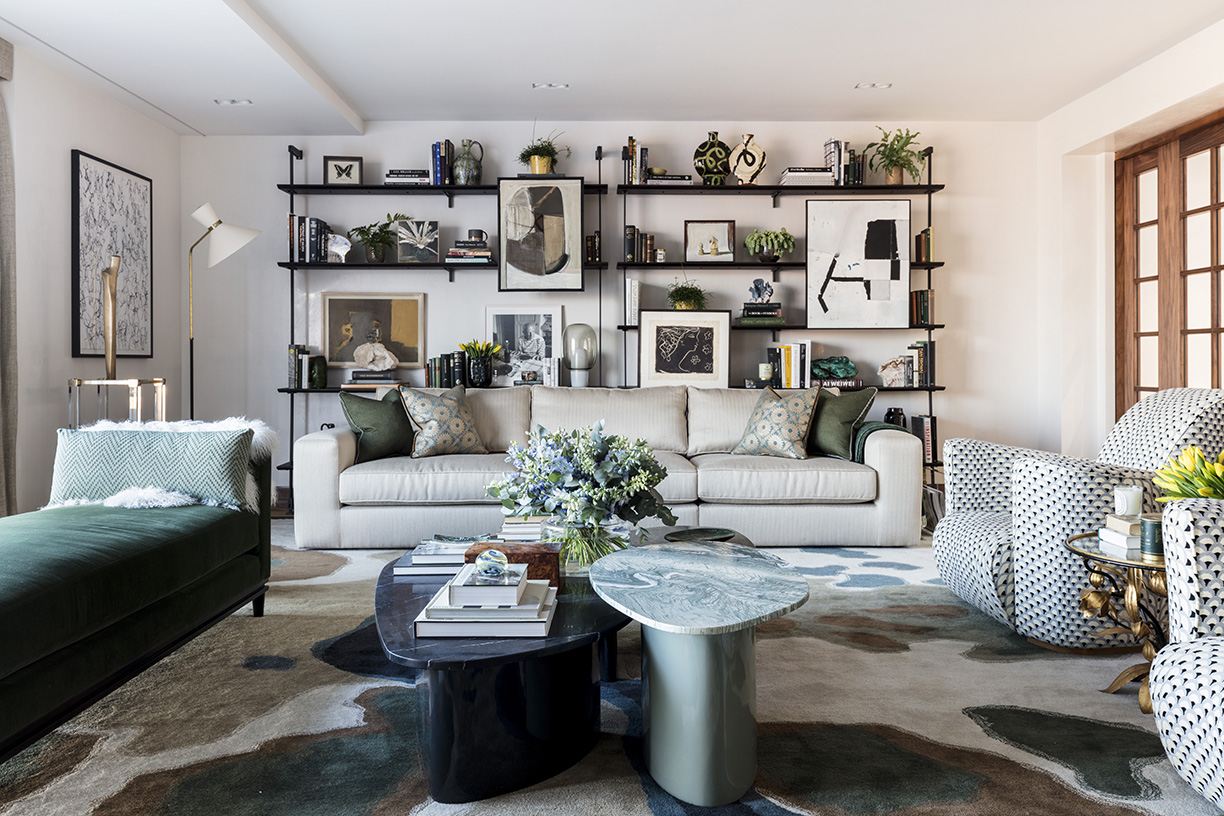
The Invisible Collection has added its first British interior designer, Sophie Ashby, to its list of revered international designers and architects who contribute to its selection of furniture and household accessories.
The Invisible Collection is a website that provides people a way to online shop the private collections of Europe’s interior designers and architects. The website began with two friends, Anna Zaoui and Isabelle Dubern, who saw there was a need for a website that offered some of the most exclusive items from the best names in French design in one marketplace. From there, Zaoui and Dubern expanded to include designers from other European countries to make their company international.
A few noteworthy designers who contribute to the Invisible Collection are India Mahdavi, a French architect, industrial designer, graphic designer and furniture designer, Hubert Le Gall, a French designer, sculptor, scenographer and painter, and Federica Tondato, an Italian architect and interior designer. The addition of Ashby, the creative director of Studio Ashby, to the list of designers has widened the scope of the Invisible Collection to include pieces by British designers.
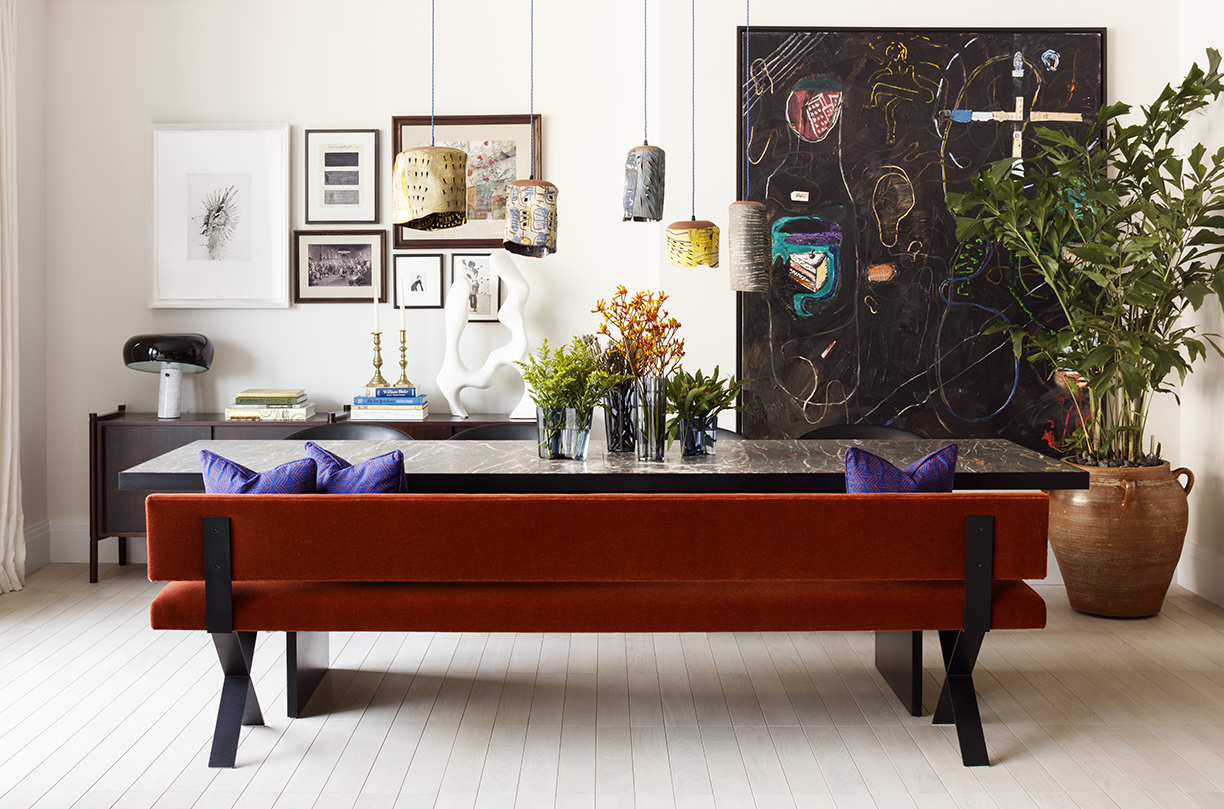
Studio Ashby’s first furniture collection in collaboration with the Invisible Collection consists of 17 pieces. The collection was designed for private residential projects in the United Kingdom, including a riverside penthouse on the Southbank, a holiday home on the coast in the new forest and a family home in Holland Park.
The collection draws inspiration from art, nature and the places Ashby has traveled to and experienced. From the works of Yves Klein to Jean Arp, and the Japanese Kyoto gardens of Holland Park to the colors of the Karoo, Ashby’s nomadic upbringing and love for travel, combined with her artistic sensibility, grant a unique personality to her designs.
Ashby’s different experiences have each fed her understanding of design, its power and its possibility — from the vast nature of the south African landscape to the small rooms of a Victorian house in the city, and the urban intensity of New York to the rural charm of the English countryside.
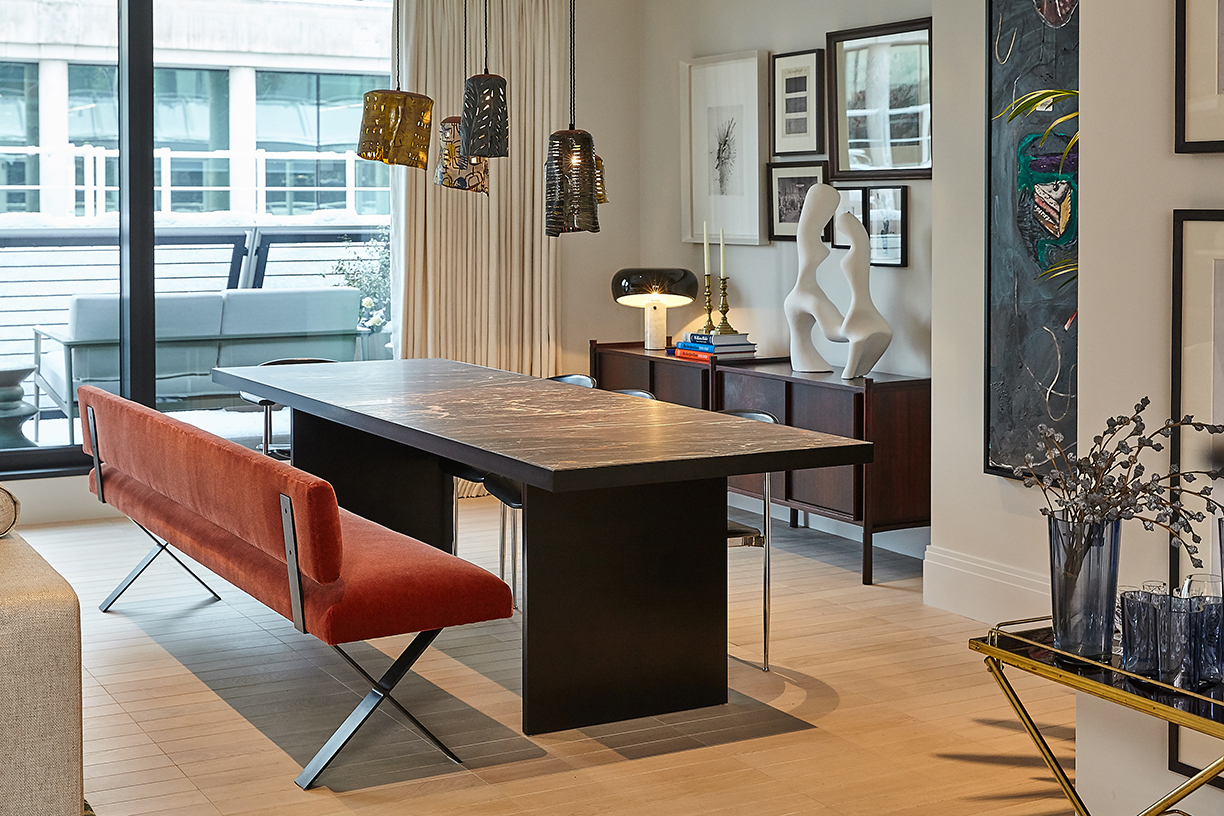
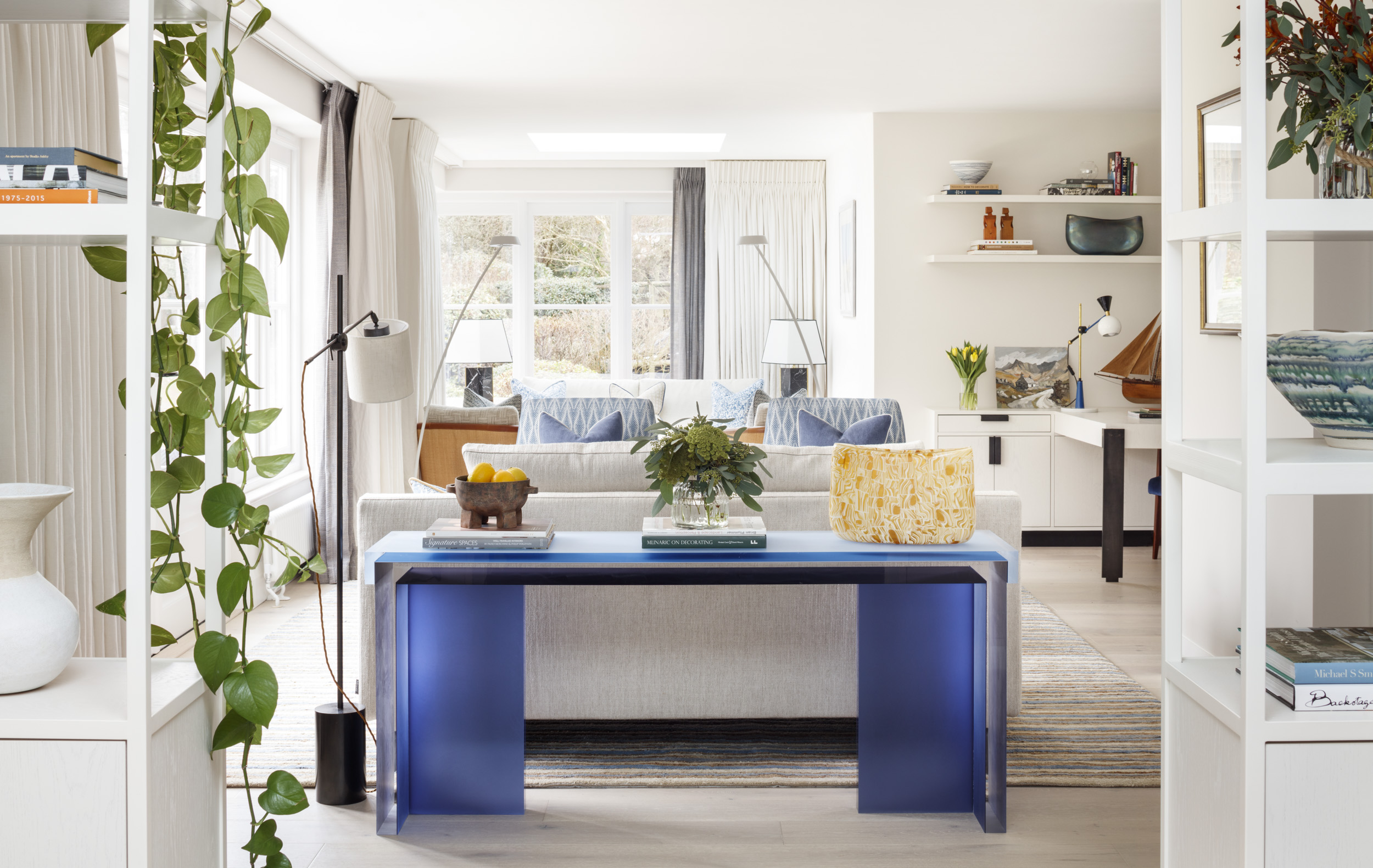
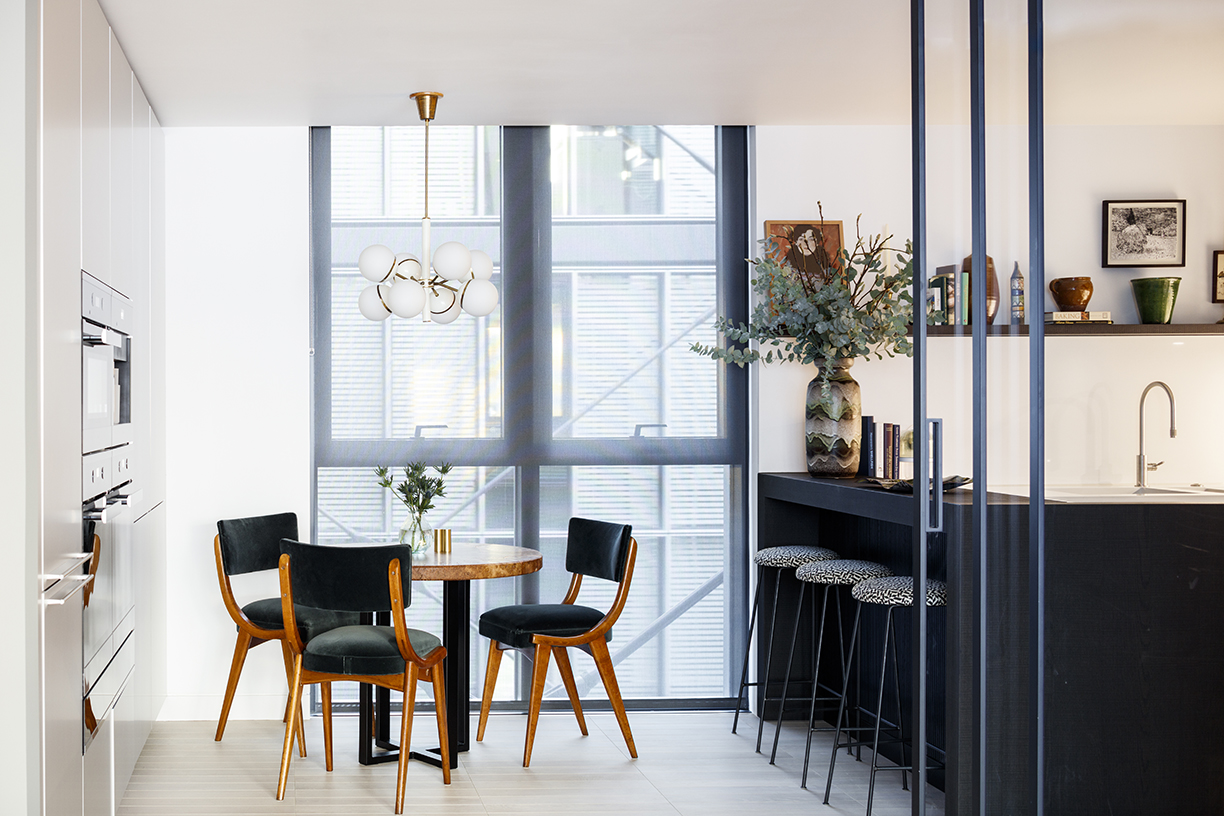
Photos courtesy of www.theinvisiblecollection.com
Architect SOO K. CHAN’S LATEST RESIDENTIAL BUILDING provides expansive panoramic views of Manhattan’s High Line.
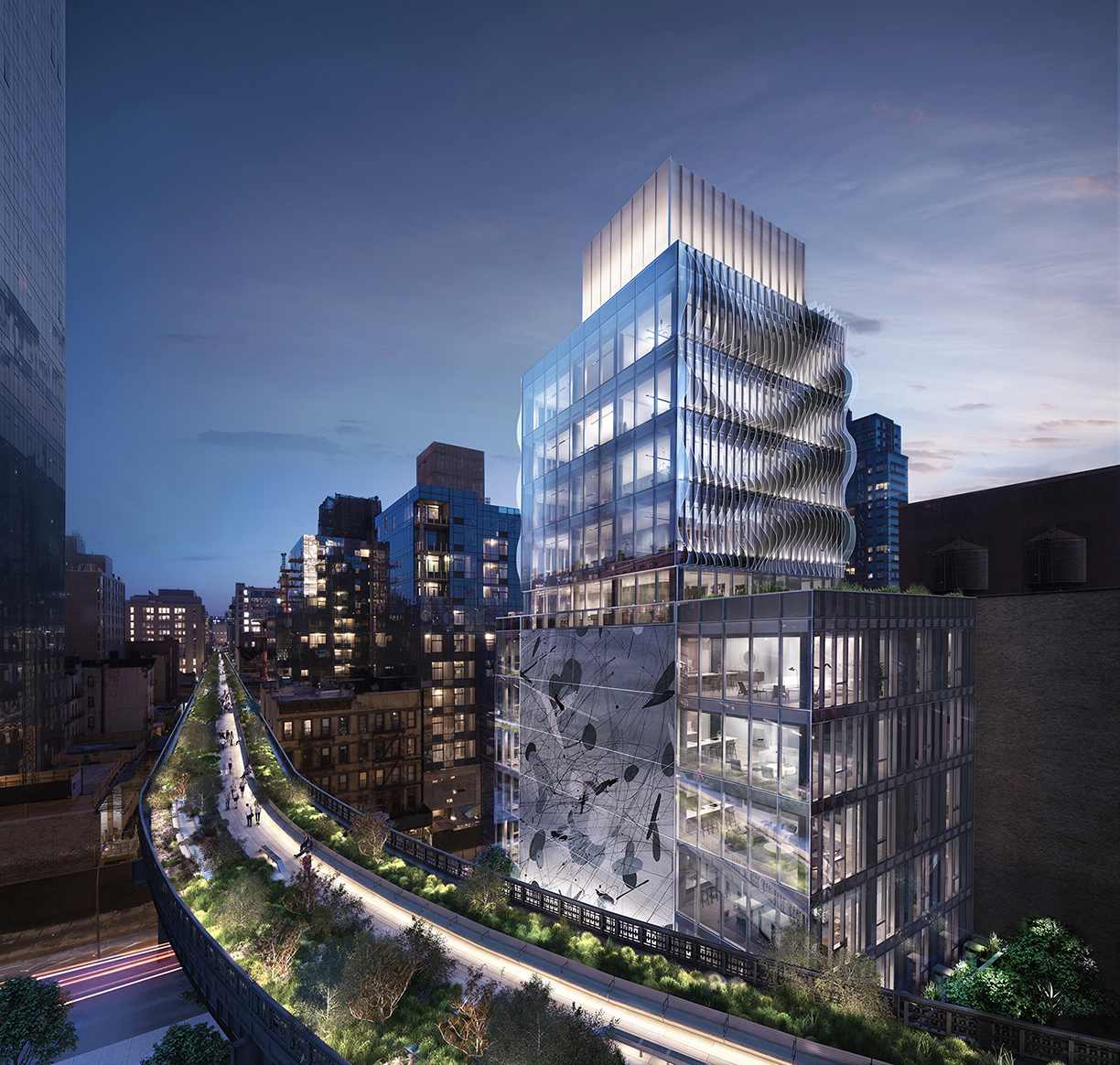
Sales have launched at Five One Five, a new luxury residential building in Manhattan’s West Chelsea neighborhood. Located at 515 West 29th Street, the building is the only property in Manhattan to be framed by the renowned High Line park on two sides.
The 15-unit development was designed by acclaimed Singaporean architect Soo K. Chan, founding principal of SCDA — a multi-disciplinary firm engaging in architecture, interior, landscape and product design. The building’s distinctive design and construction features, including an intricate exterior made of curvy glass fins that give the façade a rippling appearance, reflects Chan’s signature fluid style that seamlessly coalesces with its surroundings. Chan and SCDA have designed and built residences, hotels and museums around the world, with Five One Five being their second project in New York.
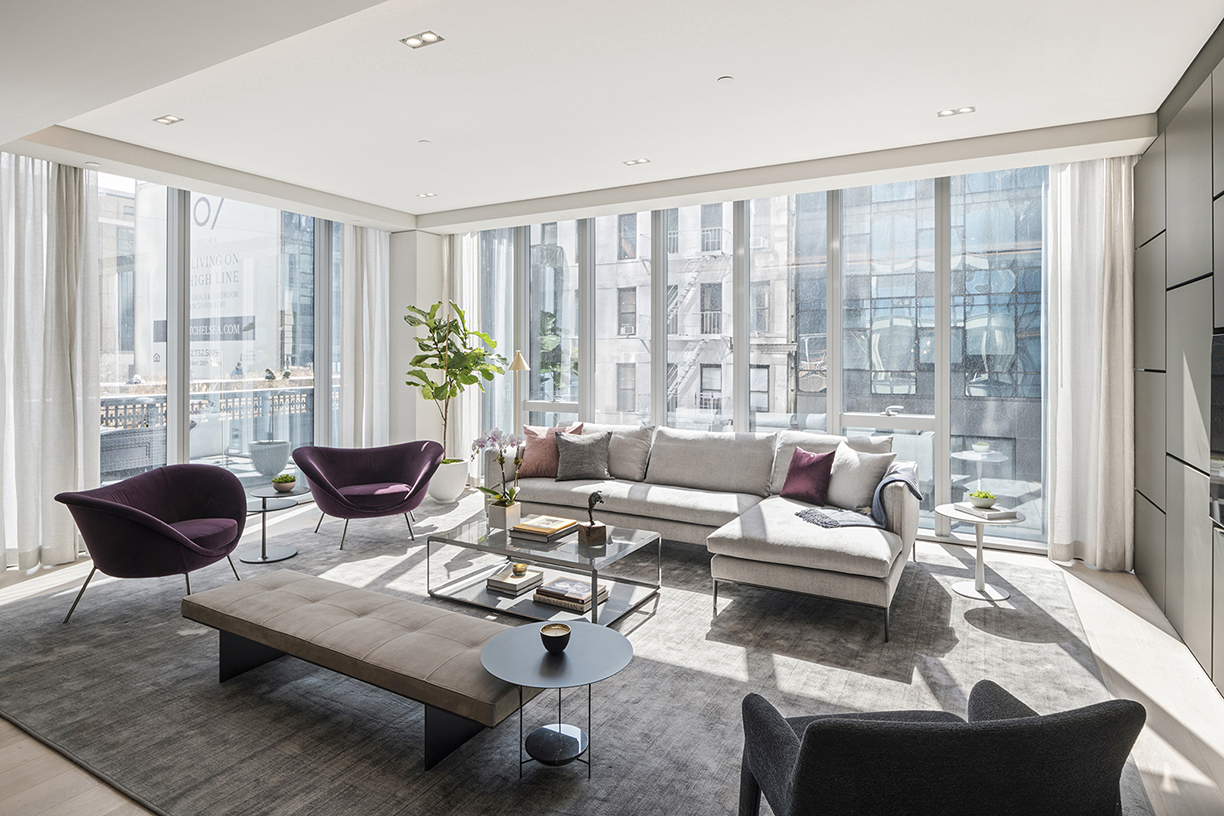
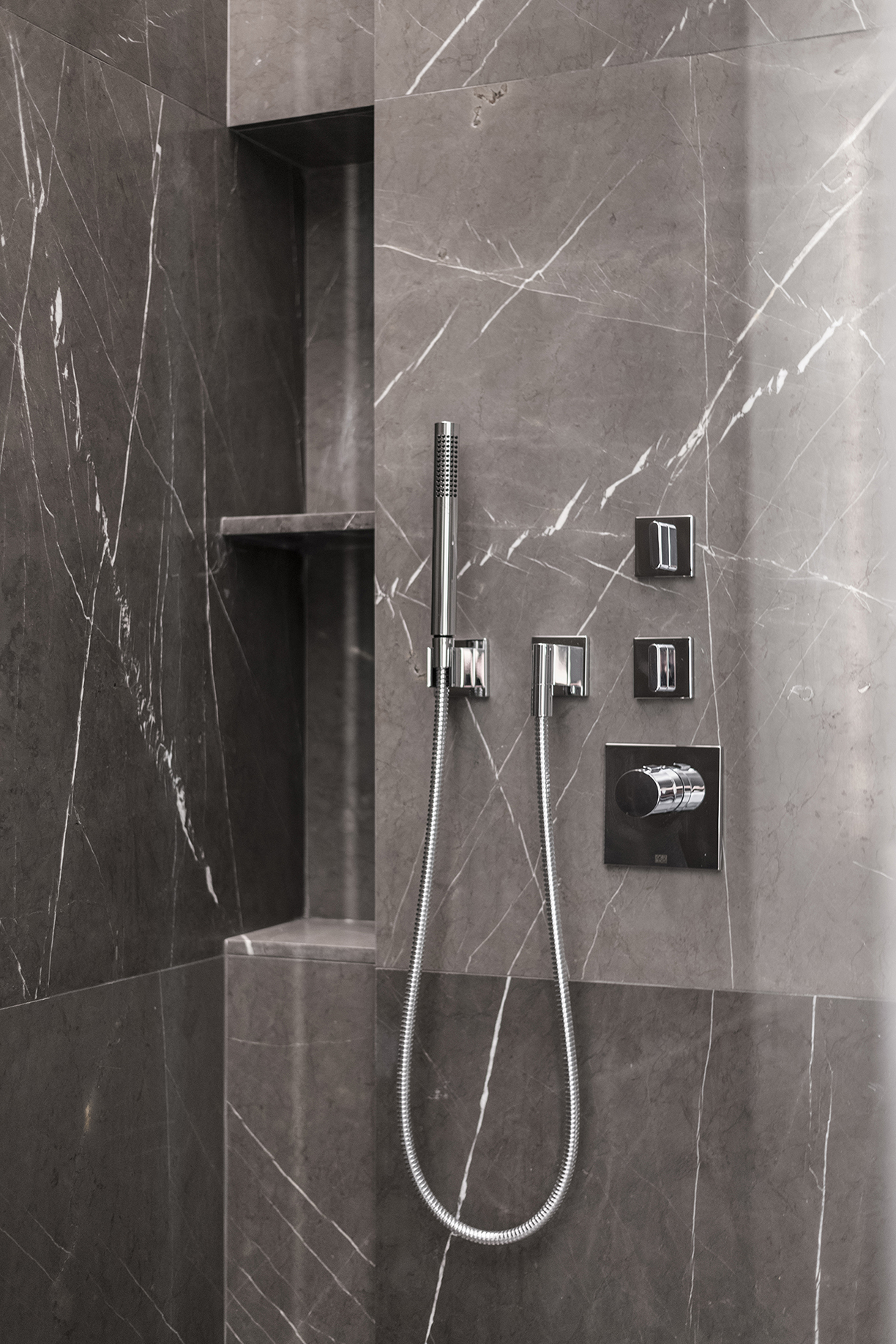
Forum Absolute Capital Partners, a New York-based, privately-owned real estate investment platform with approximately $400 million in equity under management, is the owner and developer of the project. FACP and CORE, New York City’s leading boutique real estate brokerage firm, are leading sales and marketing for the development.
“Five One Five is a truly remarkable residential development because it is one of the few buildings that overlooks the High Line with unobstructed views over the Hudson Yards plaza,” said Shaun Osher, founder and CEO of CORE. “The unique building design and generous layouts are sure to generate strong interest in this boutique project.”
Five One Five has world-class amenities that come with it, including a gym, 24-hour attended lobby, direct keyed elevator access to each residence, roof deck with a kitchen and ample storage. The development is located just steps from multiple transportation options, including the West Side Highway, the 7, A, C and E subway lines and access to interstate rail-transit via Penn Station.
Five One Five also includes a mix of two- and three-bedroom apartments, including a five-unit penthouse collection with expansive panoramic views of the High Line. All units feature bright, spacious Bulthaup kitchens with Gaggenau appliance packages and built-in multipurpose islands that are great for entertaining. Additionally, each unit features light oak floors, Molteni millwork and closet build-outs, door hardware by Franz Schneider Brakel, as well as Delta LED light fixtures and mobile-controlled Lutron Homeworks QS System for electronics, temperature control, shades and lighting. Prices at the 11-story building range from $4.3 million to $8.5 million.
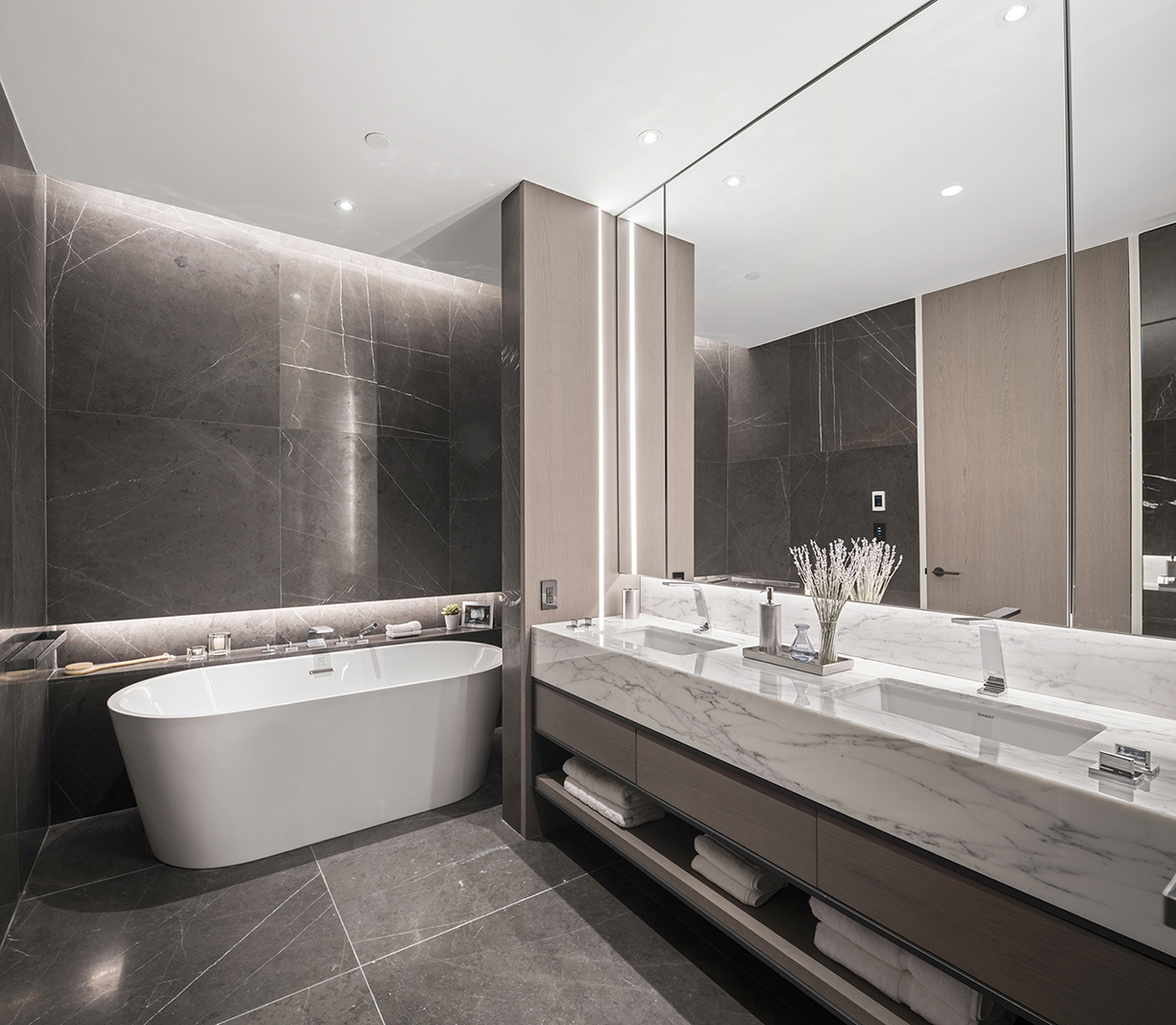
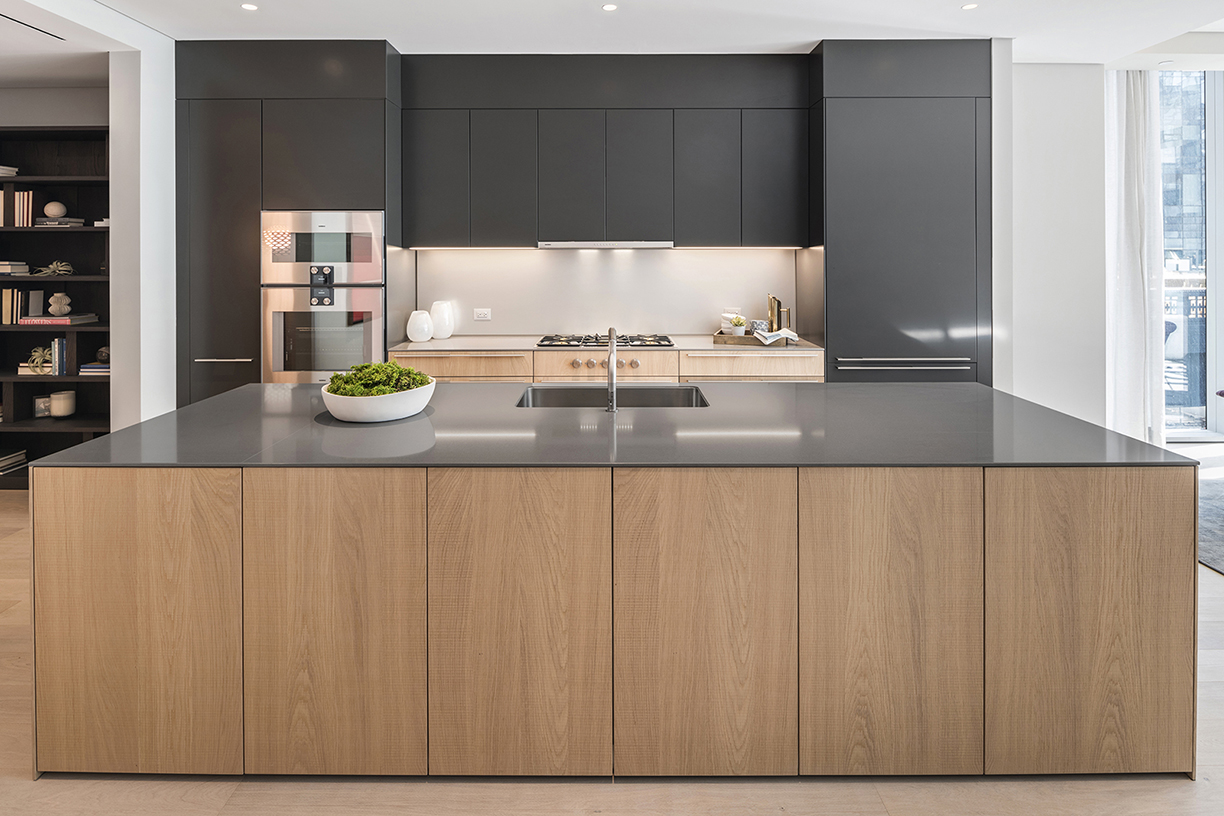
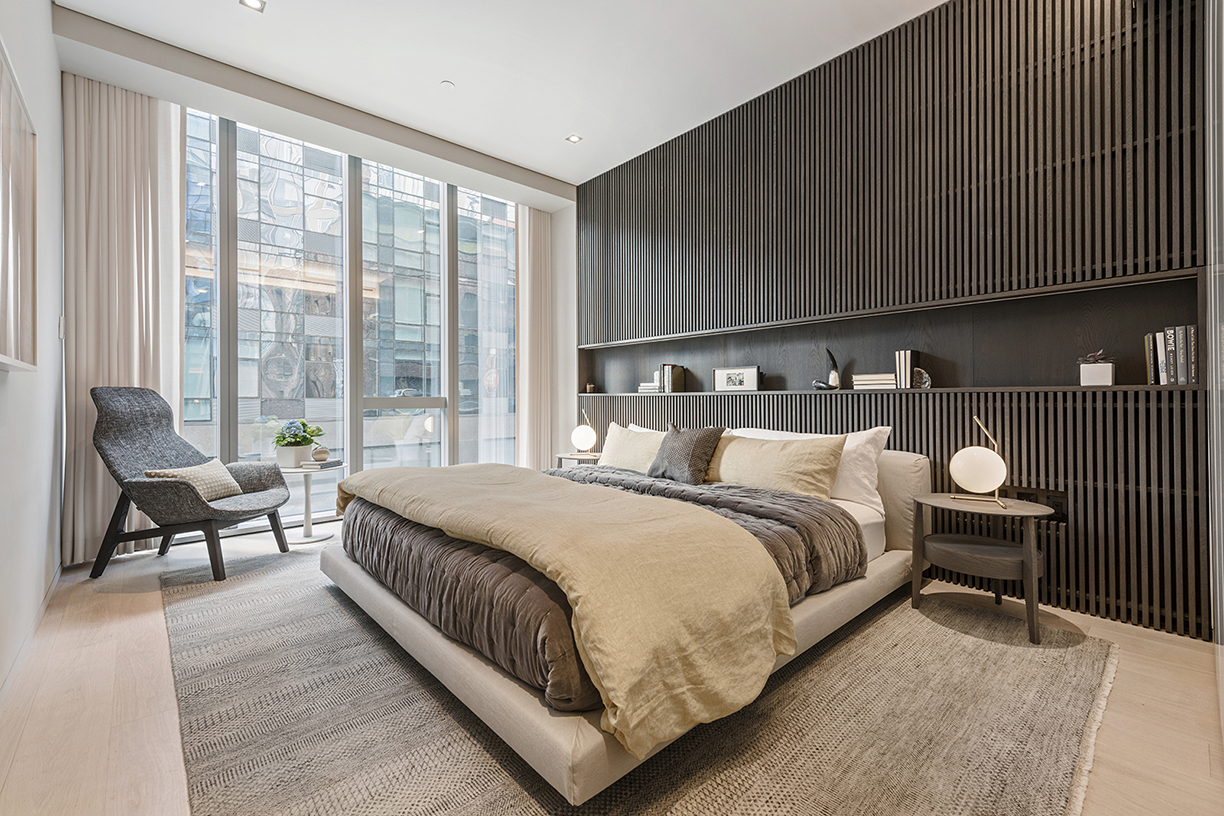
Photos courtesy of CORE
Being an innovator such a unique and artistic industry as design and architecture takes time and extraordinary effort. To showcase the innovative women making large strides in this business, CovetED Magazine recently highlighted 25 of the most influential women in both design and architecture on their blog.
Zaha Hadid
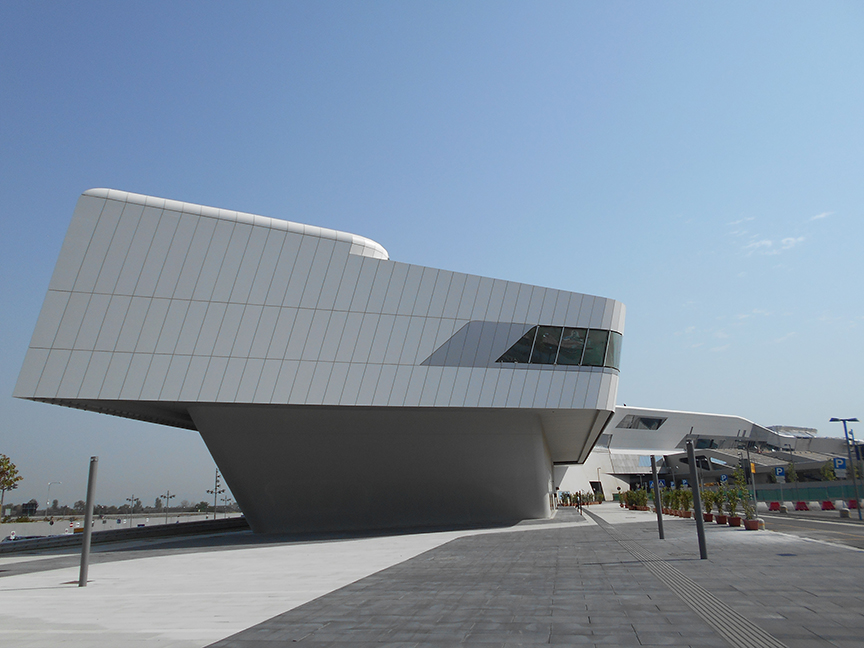
Zaha Hadid, the iconic Iranian-British architect known for her powerful, neo-futuristic creations and exemplary architecture. Though her passing in 2016 has left the world with one less imaginative spirit, her artistic views exist in her projects and their impact on those who see or benefit from them.
One of these projects includes the Napoli-Afragola high-speed train station that provides a key interchange hub for four high-speed train lines. Located only 7.5 miles from Naples, these lines will link the north and south sections of the country.
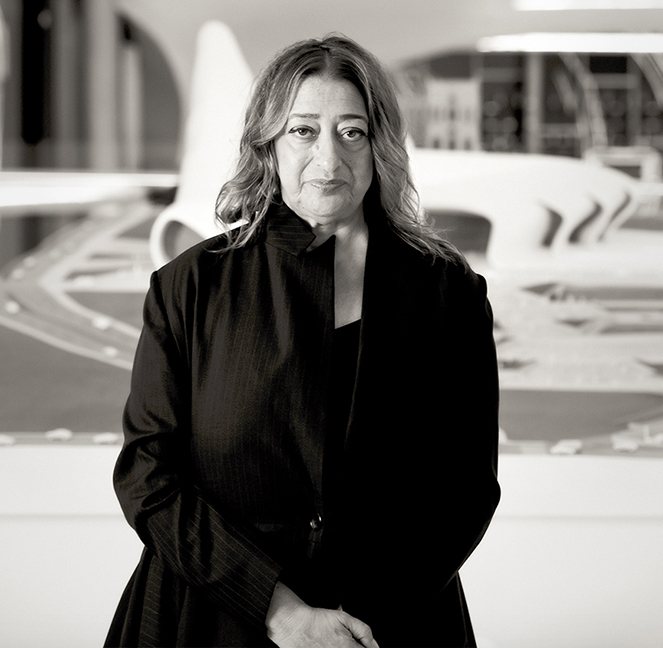
Headshot photo credit: Dmitry Ternovoy. Train station photo credit: Pivari.com
Kelly Wearstler
Interior designer Kelly Wearstler also ranks highly on the list. Known for her aesthetics in modern California luxury, Wearstler’s business has grown remarkably since the early ’90s from a boutique interior design firm to a global lifestyle brand, with designs in lighting, fabrics and furniture in both residential and commercial spaces. Artistic pieces like this gold sculpture showcase a bold, unique presence that makes a statement.
Neri Oxman
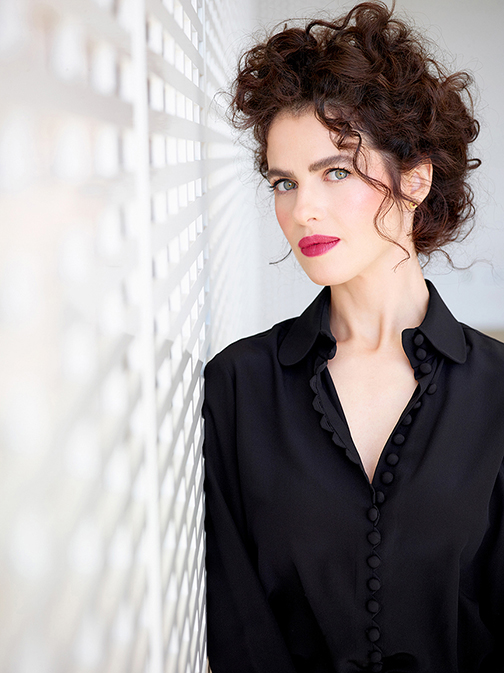
Architect, designer and inventor Neri Oxman is known for making her own statements in both the architectural and scientific fields of study. As Sony Corporation Career Development Professor and Associate Professor of Media Arts and Sciences at the MIT Media Lab, Oxman has coined the term material ecology, which considers “computation, fabrication, and the material itself as inseparable dimensions of design.
In this approach, products and buildings are biologically informed and digitally engineered by, with and for, Nature,” according to her website.
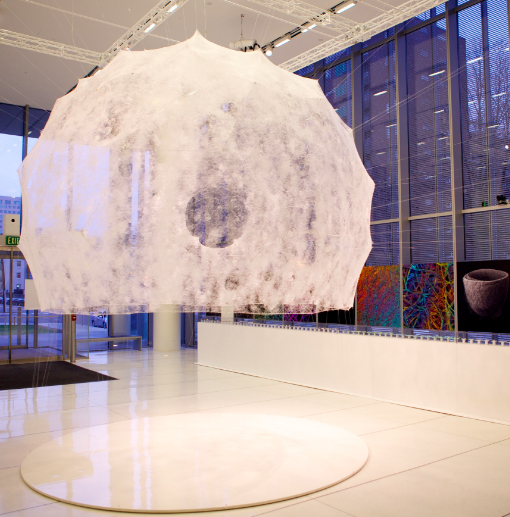
Some of Oxman’s work is included in permanent collections at the Museum of Modern Art, the Smithsonian Institute, the Boston Museum of Fine Arts and other prestigious organizations. The MIT Media Lab features one of her structures titled Silk Pavilion, created using an algorithm that replicates a silkworm’s biological silk-spinning methods.
Photos courtesy Neri Oxman.
See CovetED Magazine’s full list of 25 female innovators in the link below!
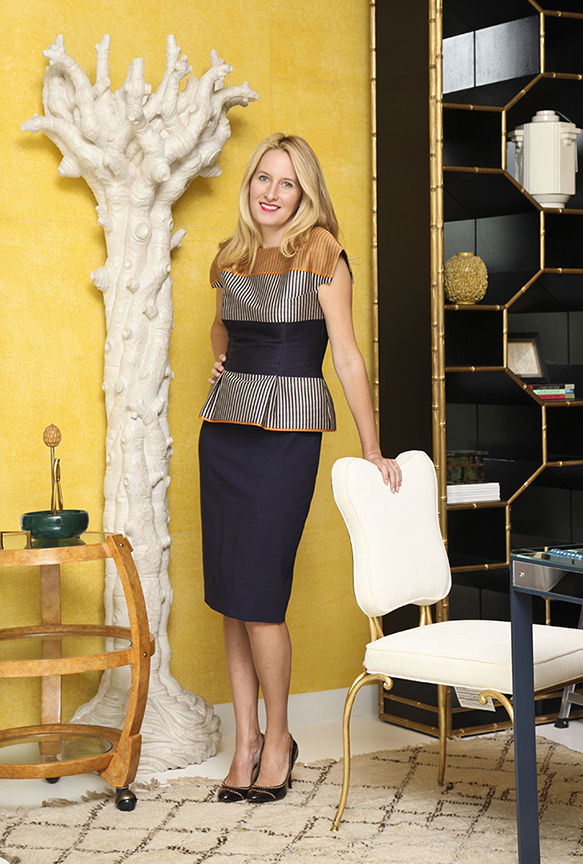
Arteriors, a leading provider of luxury lighting, occasional furniture and decorative accessories, is debuting its latest guest designer collaboration with interior designer Celerie Kemble. The collection recently launched online in advance of the April release at the Spring 2018 High Point Market.
“Celerie brings a different design vision to the Arteriors assortment with feminine, soft designs that bring a light and playful element to interior spaces,” says Mark Moussa, founder and creative director for Arteriors. “She has a special sense for shaping materials that, when combined with the skills of our factories, resulted in a truly exciting collection that we are thrilled to share with our customers.”
The Celerie Kemble for Arteriors collection features an assortment of wicker, rattan and bamboo pieces showcasing the natural materials that are signature to Kemble’s design aesthetic. “I designed this collection to be very tactile, with materials that pull from the natural and the handmade, where coastal informs the urbane,” says Kemble. “These pieces are meant to add levity and warmth to interiors — a touch of whimsy or flight of fancy, balanced with a modern edge.”
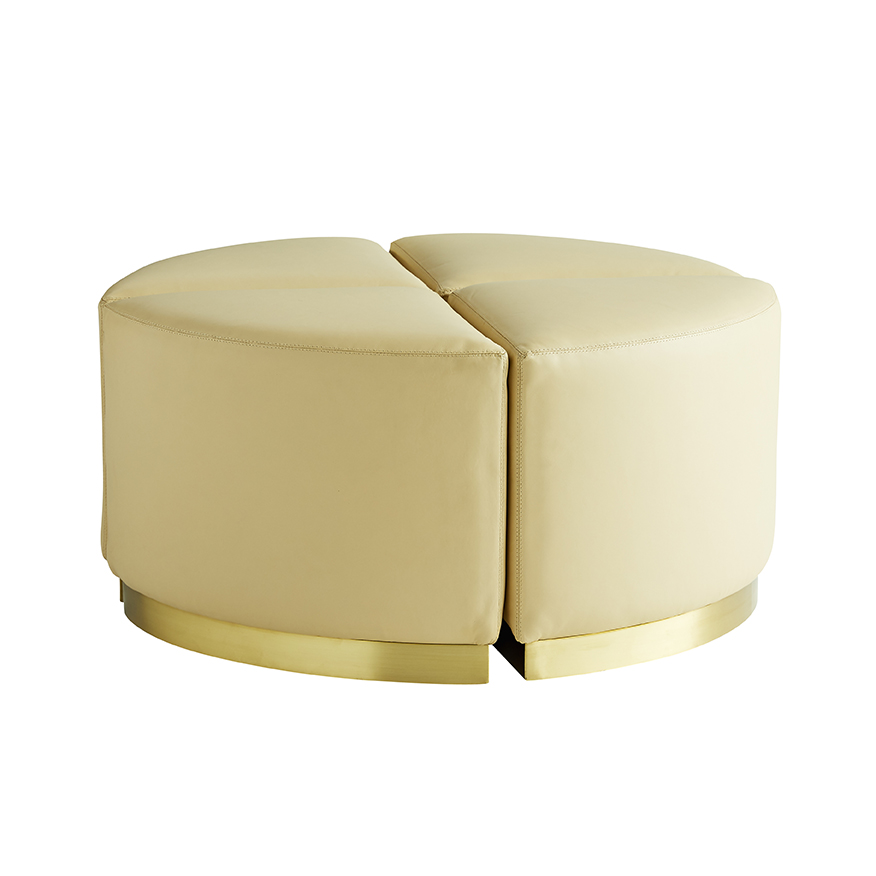
Ecru Ottomans, Set of 4
This neutral set of leather ottomans, offered at $5,670, can fit together to form one larger ottoman featuring a platform base plated with an antique brass finish.

Tinsley Bar Cart
This sleek bar cart is crafted with a vintage brass finish, featuring two tiers plated with antiqued mirror glass with a whimsical pattern. The bar is footed with 360-degree swivel casters for mobility and available for $1,800.
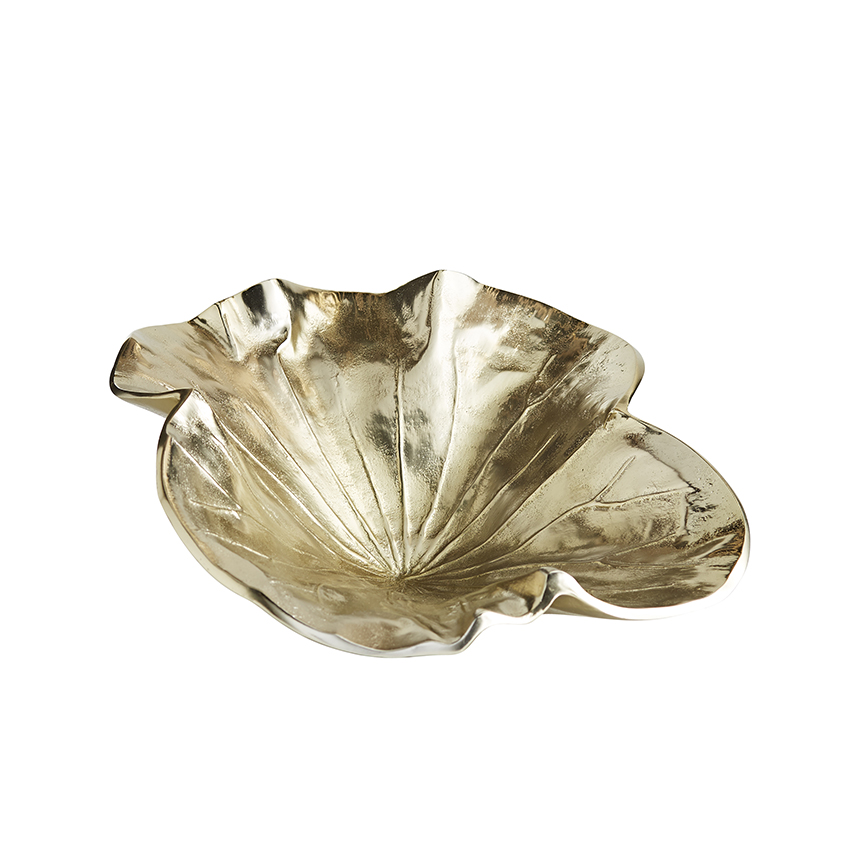
Waterlilly Sculpture
Rich in organic textures and lifelike details, this aluminum bowl has a polished brass finish to accentuate the intricate veining, leaf textures and natural curves. This piece, offered at $450, makes a great table accent or can be installed on the wall.
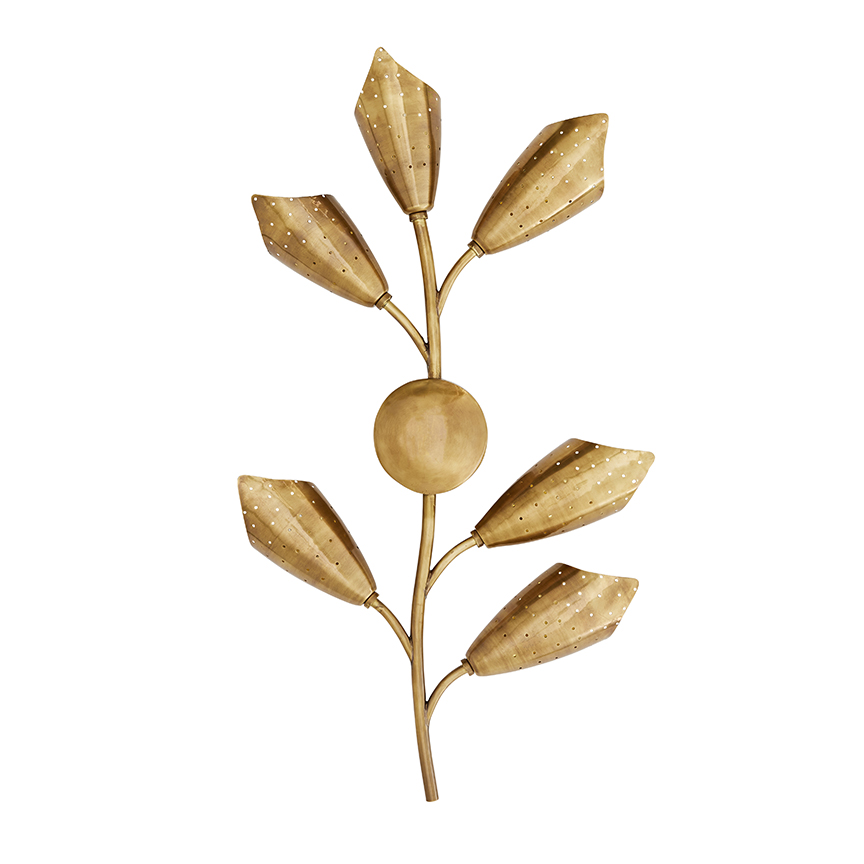
Calla Sconce
Made entirely from brass from stem to petal, this sconce is finished in a warm polish for added gloss and shine. Hand-punched details in the six lampshades cast dots of light around the room. At over two feet tall, this light is offered at $570.
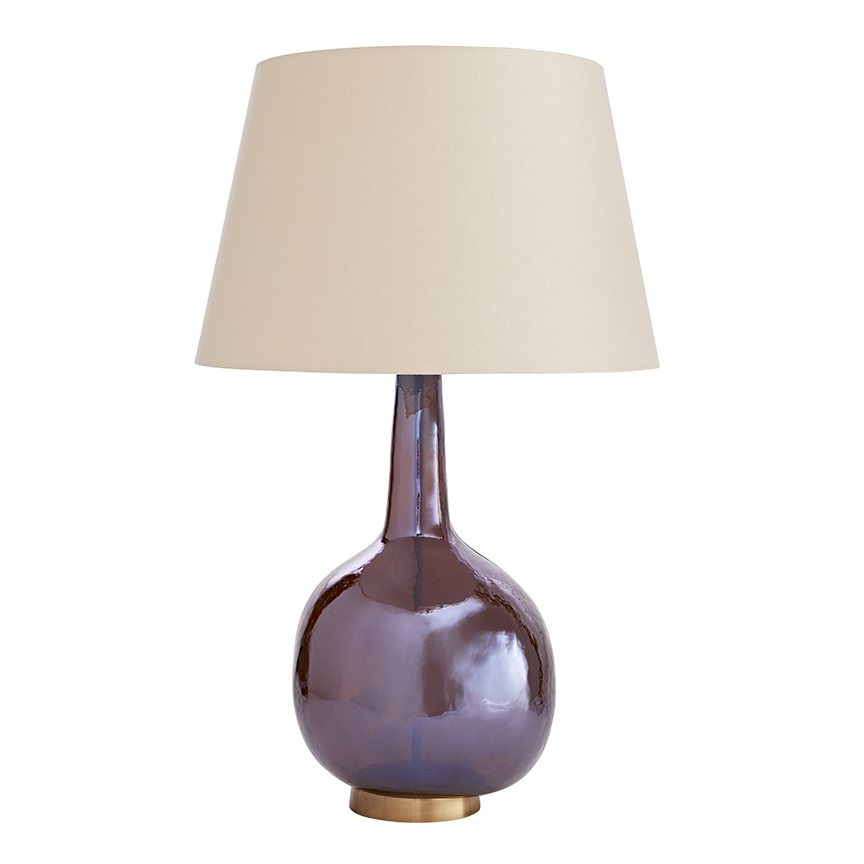
Mystic Lamp
Sultry, wine-colored glass is hand-blown to form this bottle-vase lamp. The iridescent, deep lavender hue casts a natural allure in this sleek and modern lamp, offered at $900.
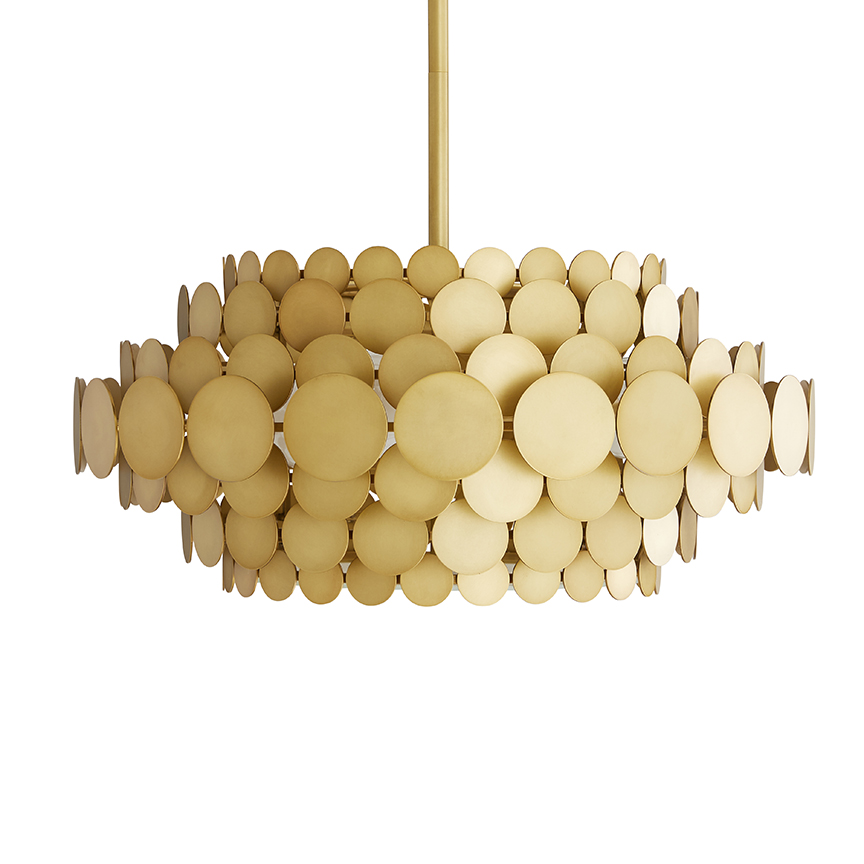
Calliope Chandelier
With over 150 stainless steel metal disks, this chandelier, available for $3,300, has an antique brass finish and a unique design. Three fittings hold standard-size bulbs, and a frosted acrylic plate beneath filters downcast light beautifully.
Photos courtesy Arteriors; headshot courtesy Josh Gaddy


